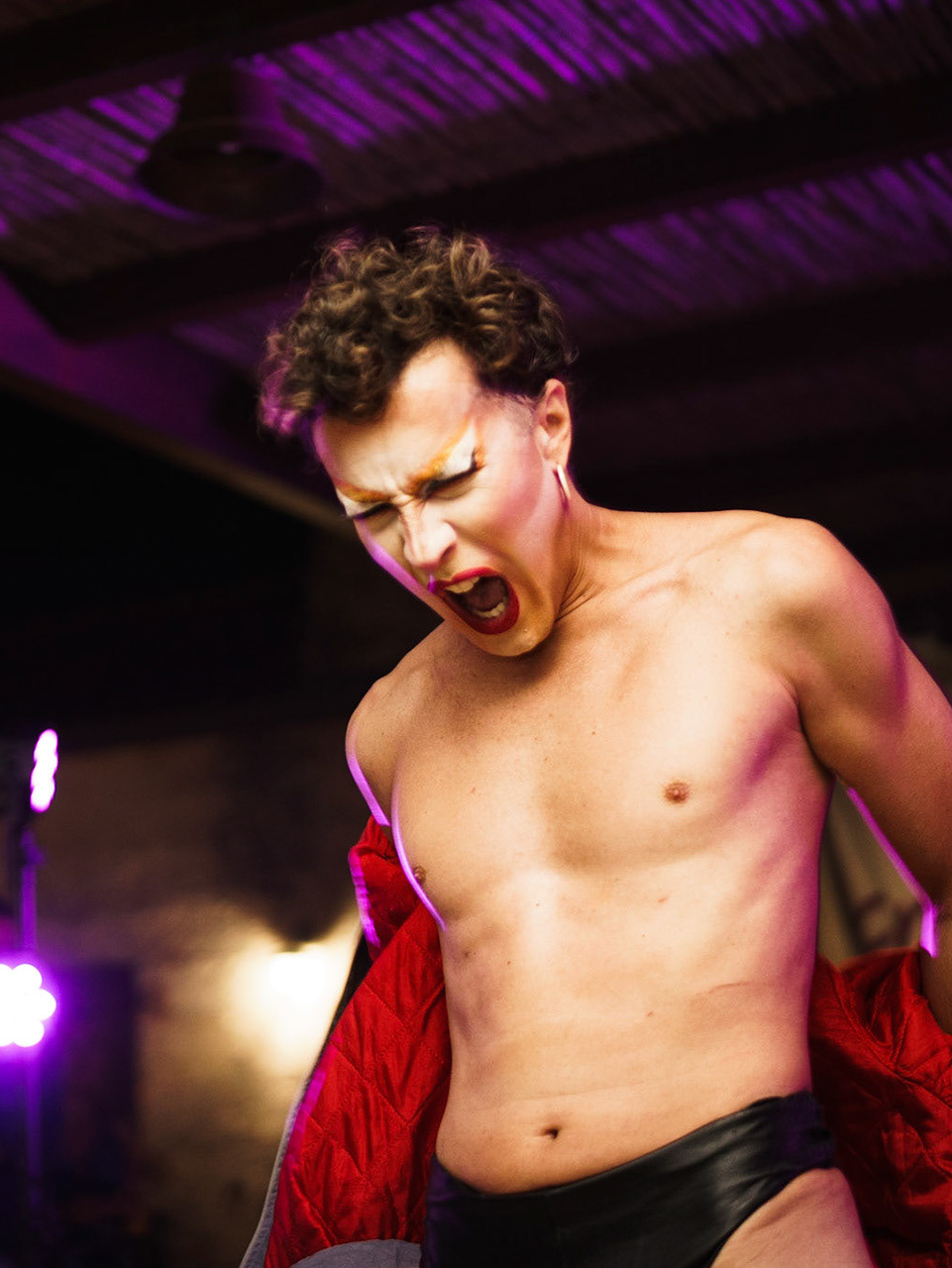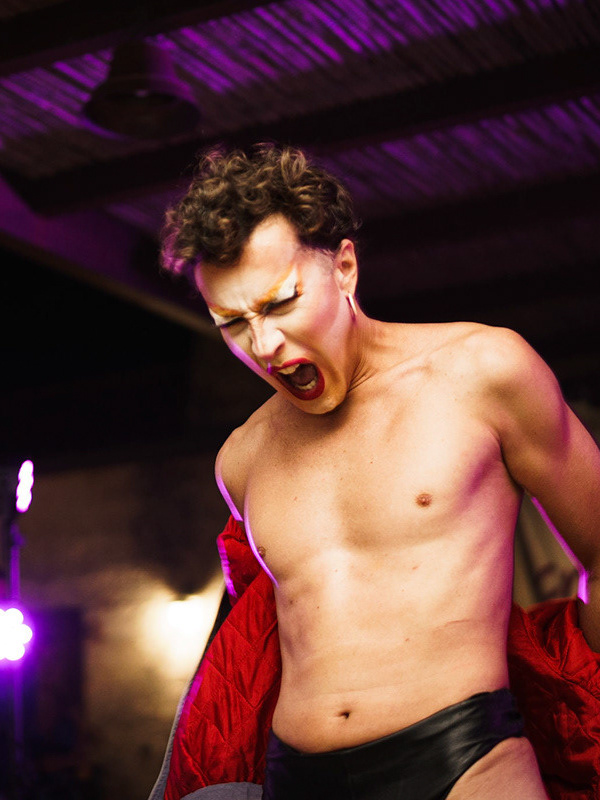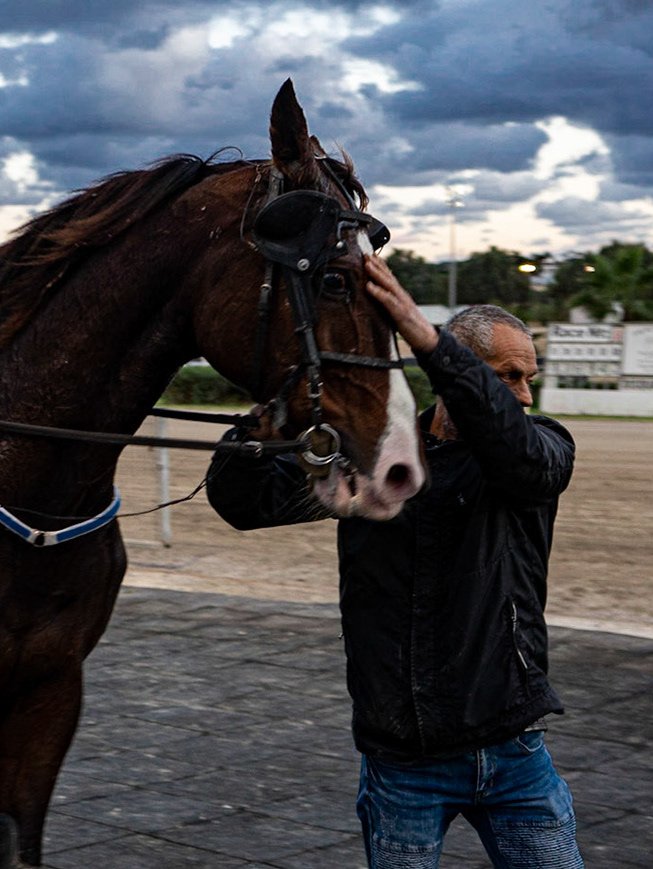To my father.
There's a small number of rural villages in the South of Italy where once a year, the whole community comes together to celebrate something important: a Pagan wedding, and not one between two humans.
Oliveto Lucano, Basilicata region of Southern Italy, August 2022. A little village which during the rest of the year counts around 400 souls, swells in size and activity. Relatives, families and long-gone migrants come back from all over Italy, even from Germany, just to assist to a very special moment of communal reconciliation. A moment of tradition. A moment of pride.
This is a story of Pagan traditions unyielding to Catholic pressures for millennia. This is the story of a modern-day Pagan wedding between two trees. And this is my attempt to narrate it through my eyes. This is
Trees of Our Fathers
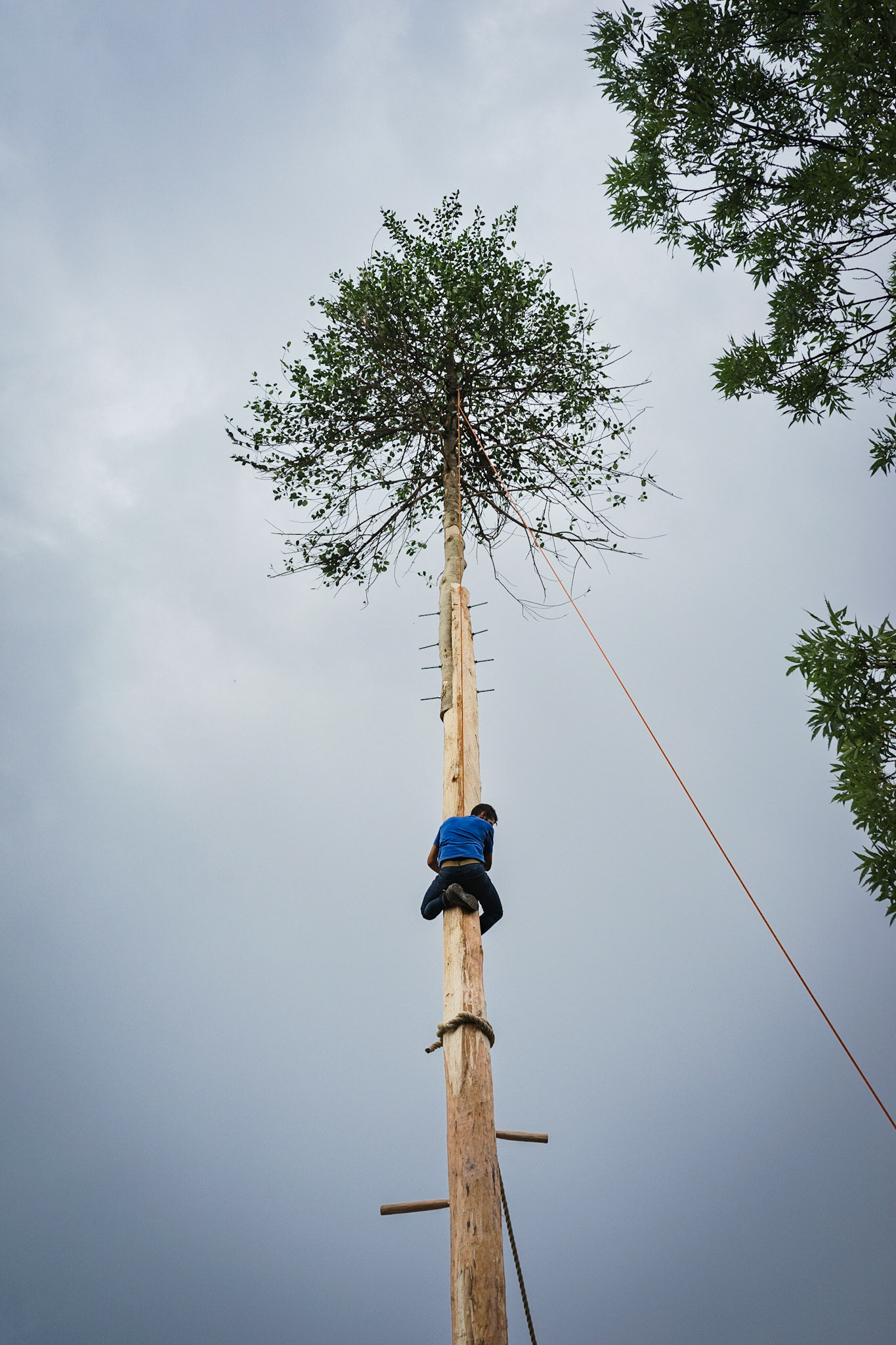
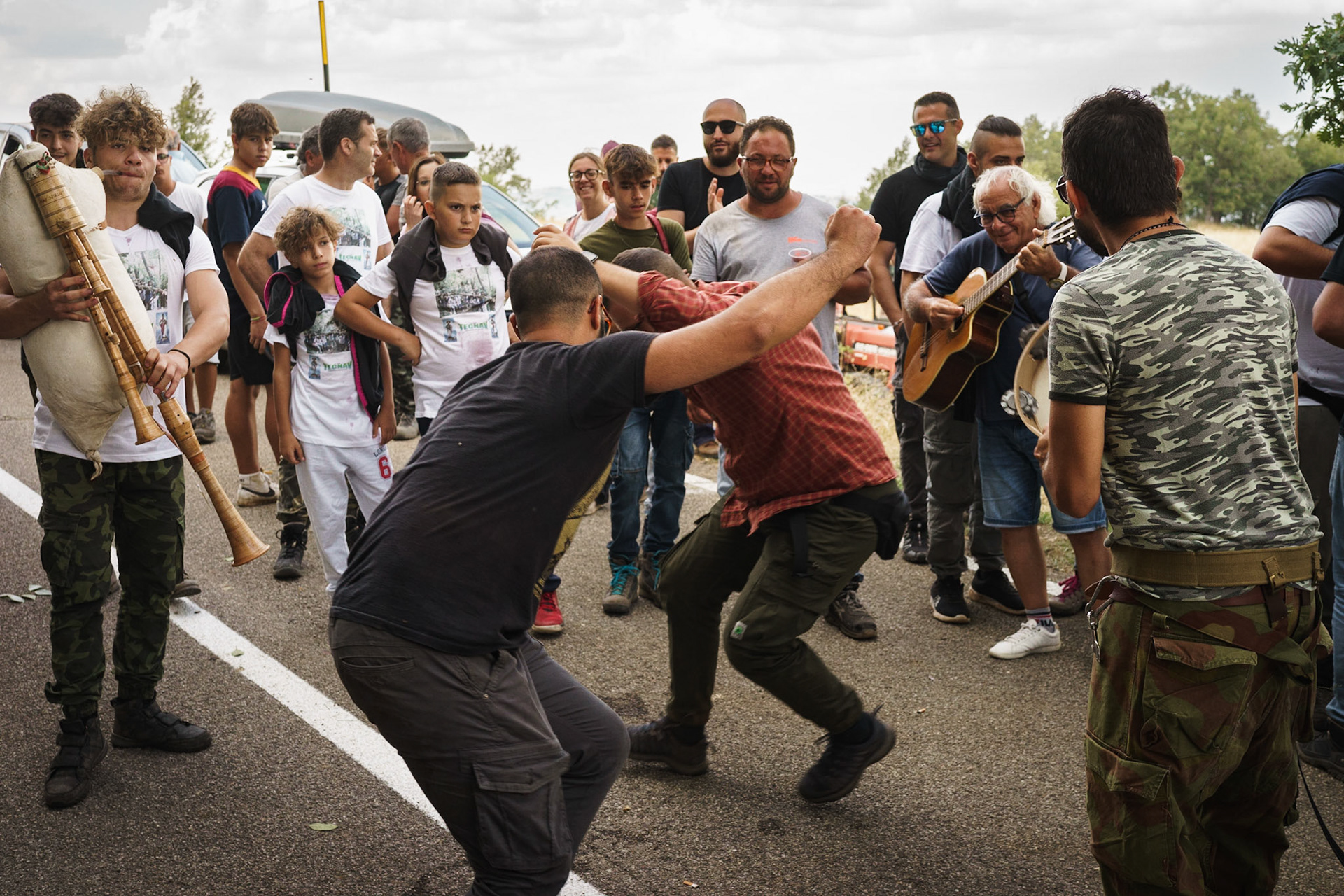
La Festa del Maggio (the Maypole festival) is a pre-Christian tradition in it essence. It makes part of the Arboreal Cults that the Church first tried to eradicate, and then tried to domesticate putting its hat on them (and a few saint patrons).
This never stopped the craze this day displays.
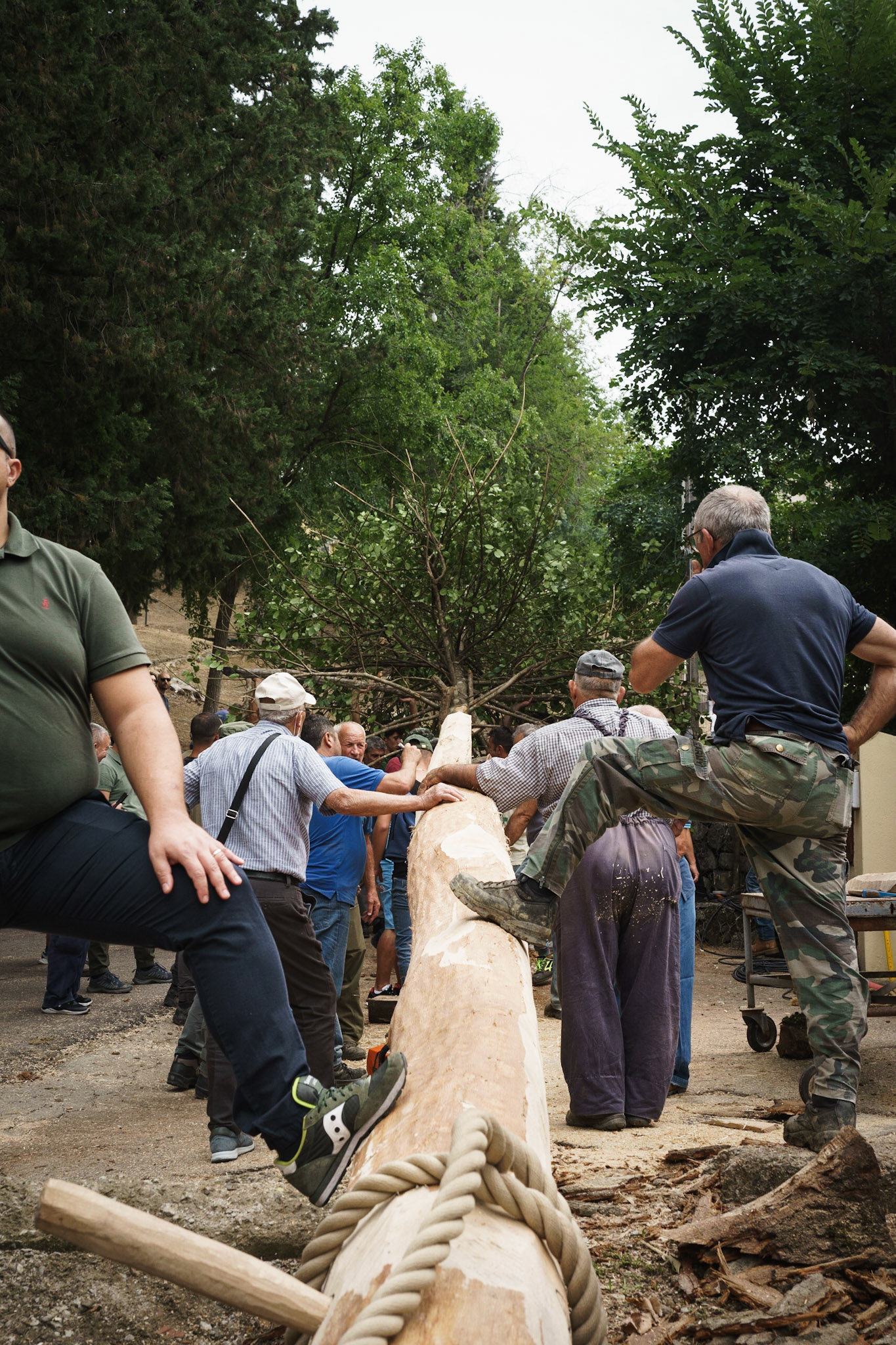
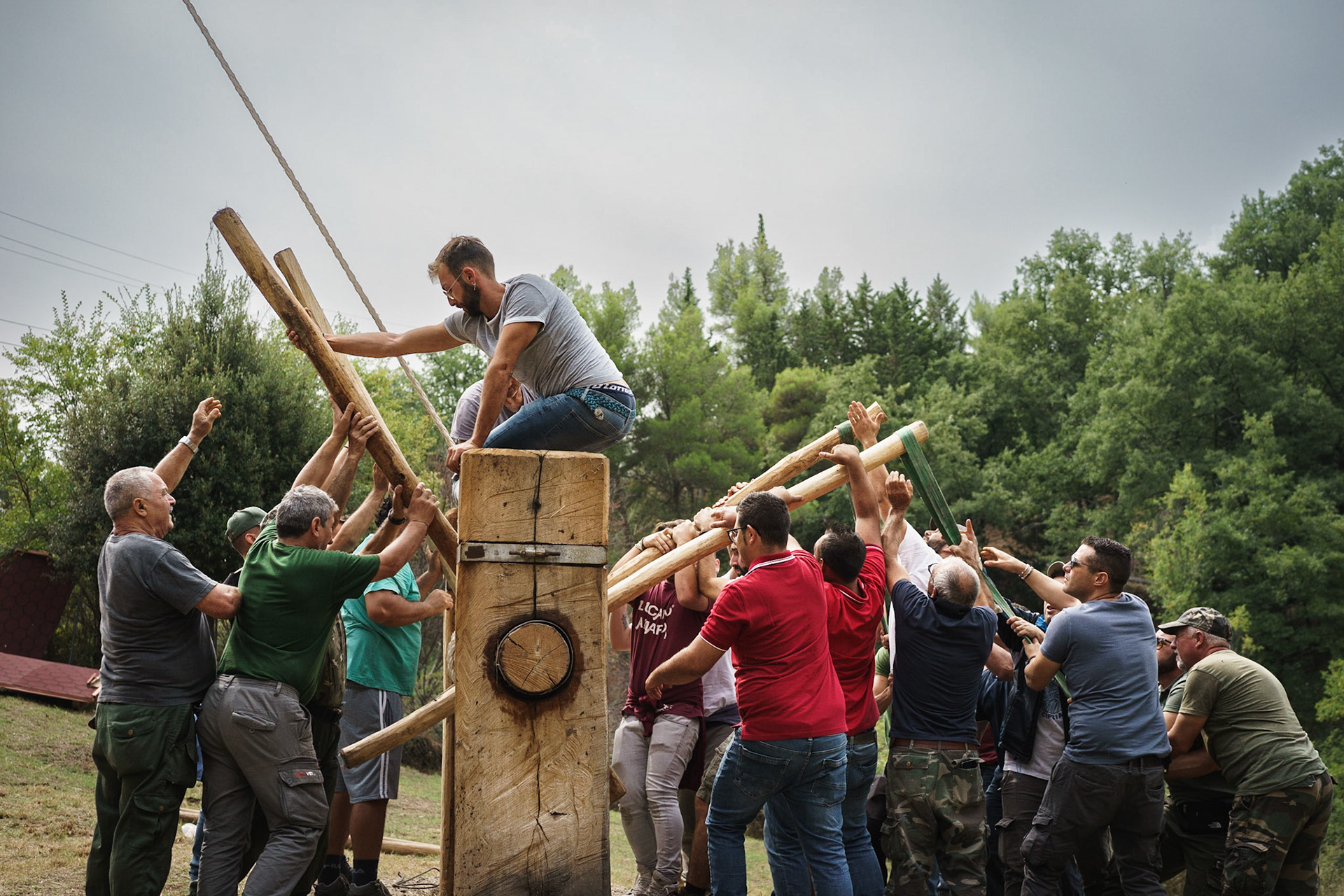
It is a several-days community ritual survived in the rural and mountainous regions of Southern Italy. Several villages here hold their own version of it, at their timing of choice, that culminates in the festive union between two different trees.
A long, leafless one, called "il Maggio" (the Maypole), playing as the husband
And a shorter, leafy one called "la Cima" (the Peak) being his wife.
La festa del Maggio is an important ritual, and maybe the most important one for these small communities, at least for their younger members. It's long-awaited well ahead its coming. And it articulates in different tasks and phases, all of which with a heavy (almost exclusive) male presence.
About a month before the wedding day, a group of men gathers in the woods a few kilometres outside the village to select il Maggio from among a group of tall, straight trees. Il Maggio is then cut down and towed with a tractor. It is left lying on the fringes of the road that leads to town.
Organisers and friends sitting on the groom (il Maggio) for lunch
On the eve of the big day, the younger participants to the ritual spend the night camping besides him. They bring booze and cigarettes with them, and leave the rest of the community to meet them again the morning after.
La Cima left propped up on the side of the street, for the long lunchtime break from the descending
So the day of the wedding, they wake to the passage of a carcade, joining it towards another forest. The forest where they will be choosing la Cima to cut it down and to bring it by hand downtown.
A tank of wine is left hanging from an oak for the festive picnic
La Cima is finally undertaken by a crowd of young villagers who seem to run on wine, and festively brought downhill towards the centre. I cimaioli, the "peakers", take big pride in the opportunity of carrying the spouse, and sometimes run too much with her.
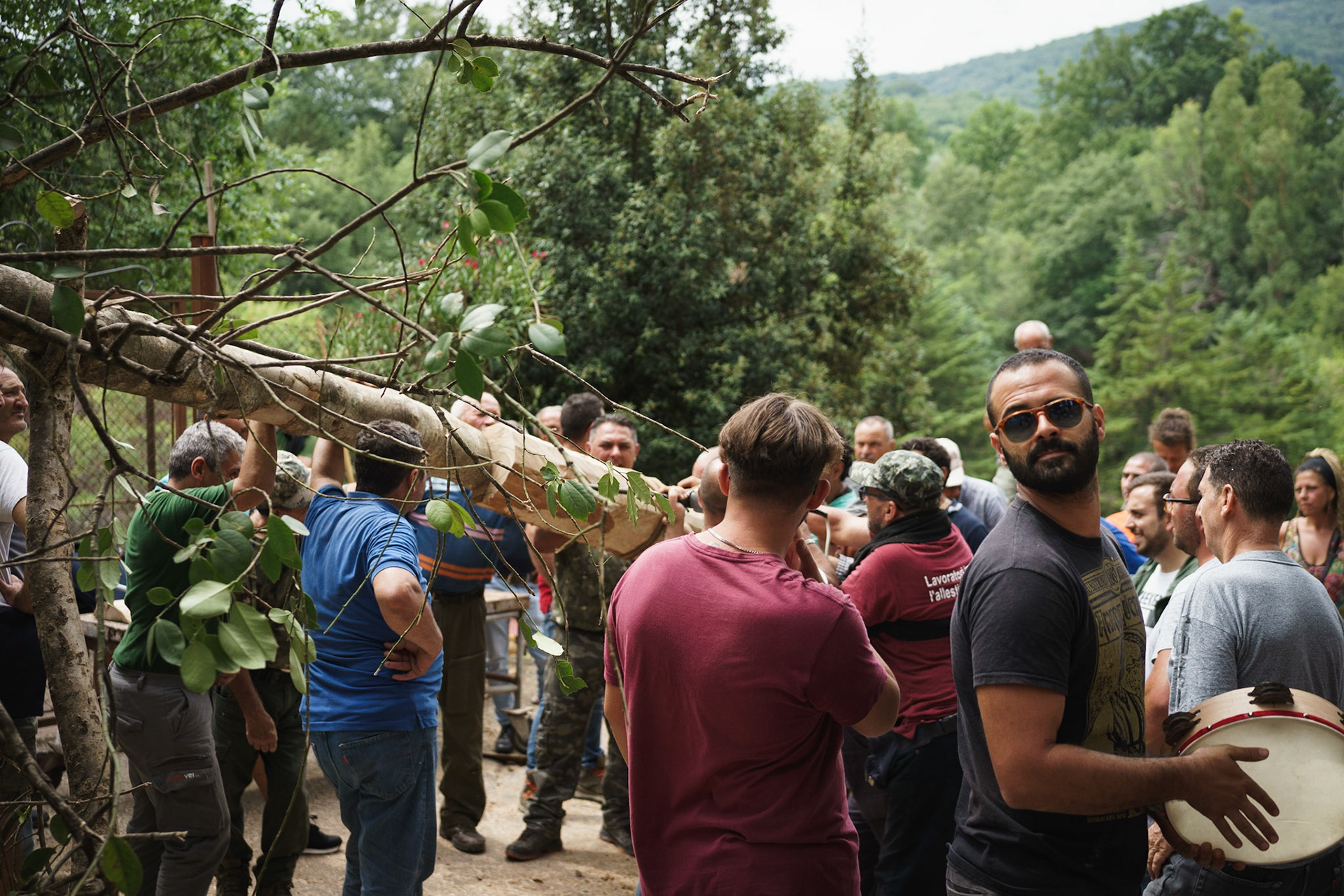
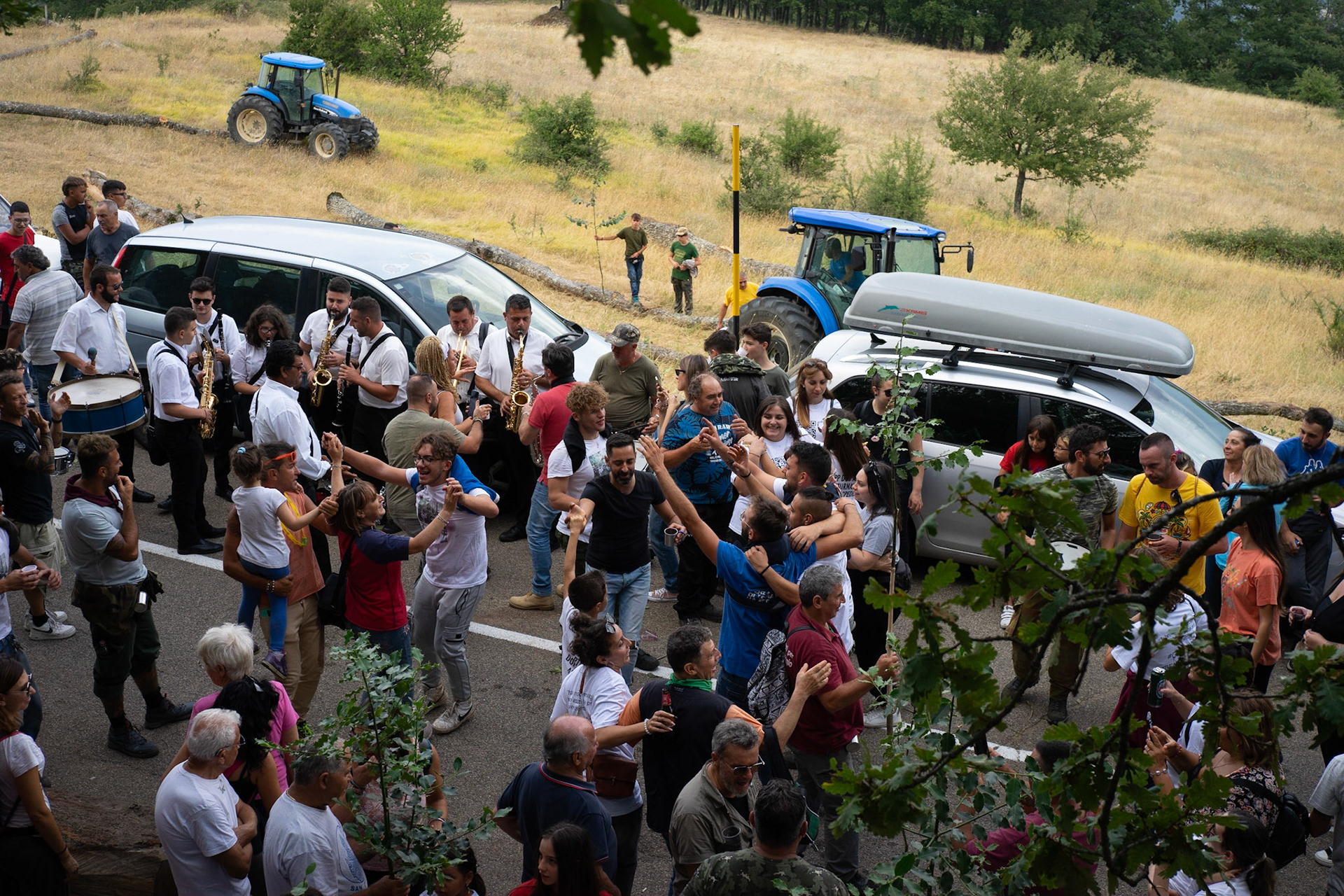
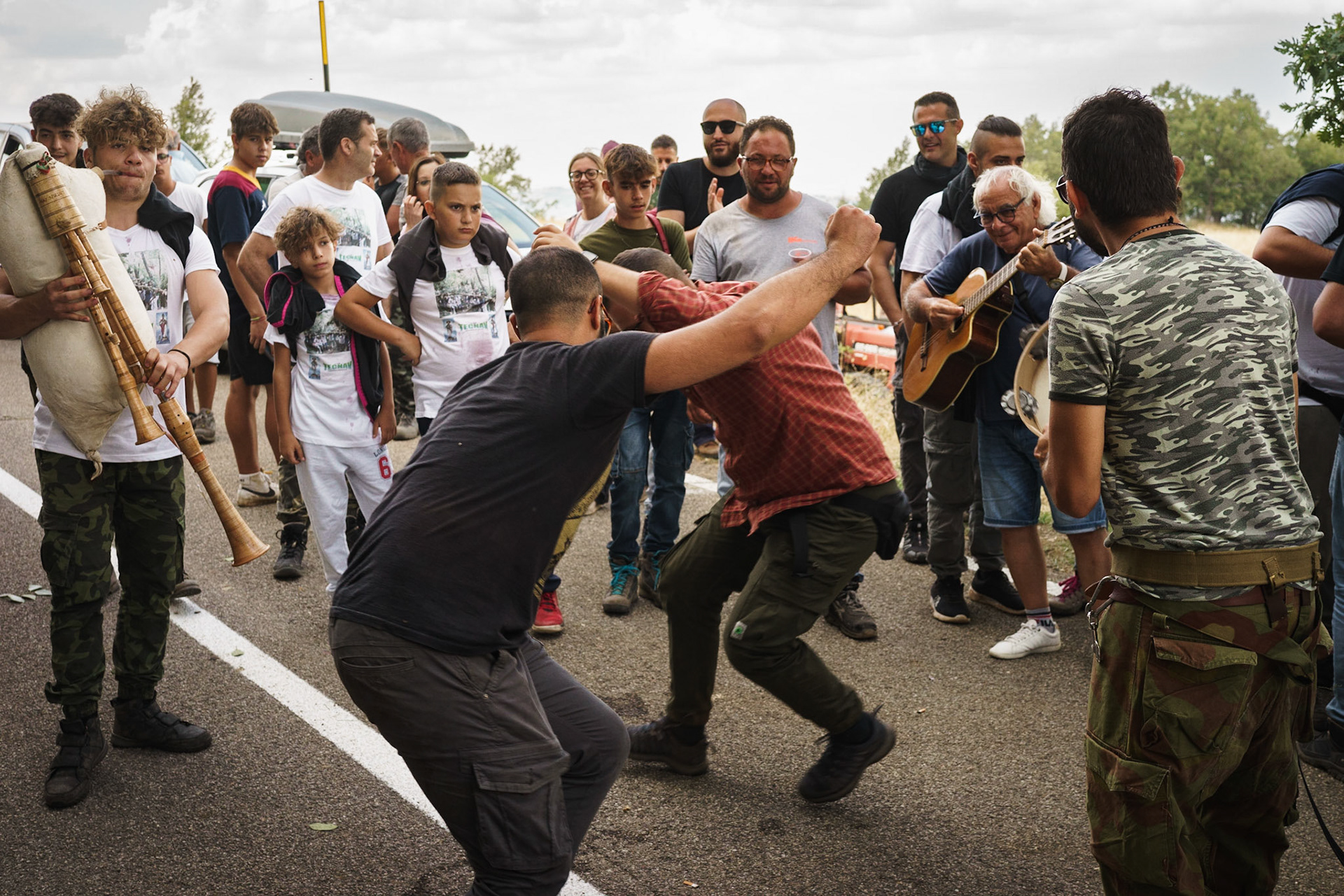
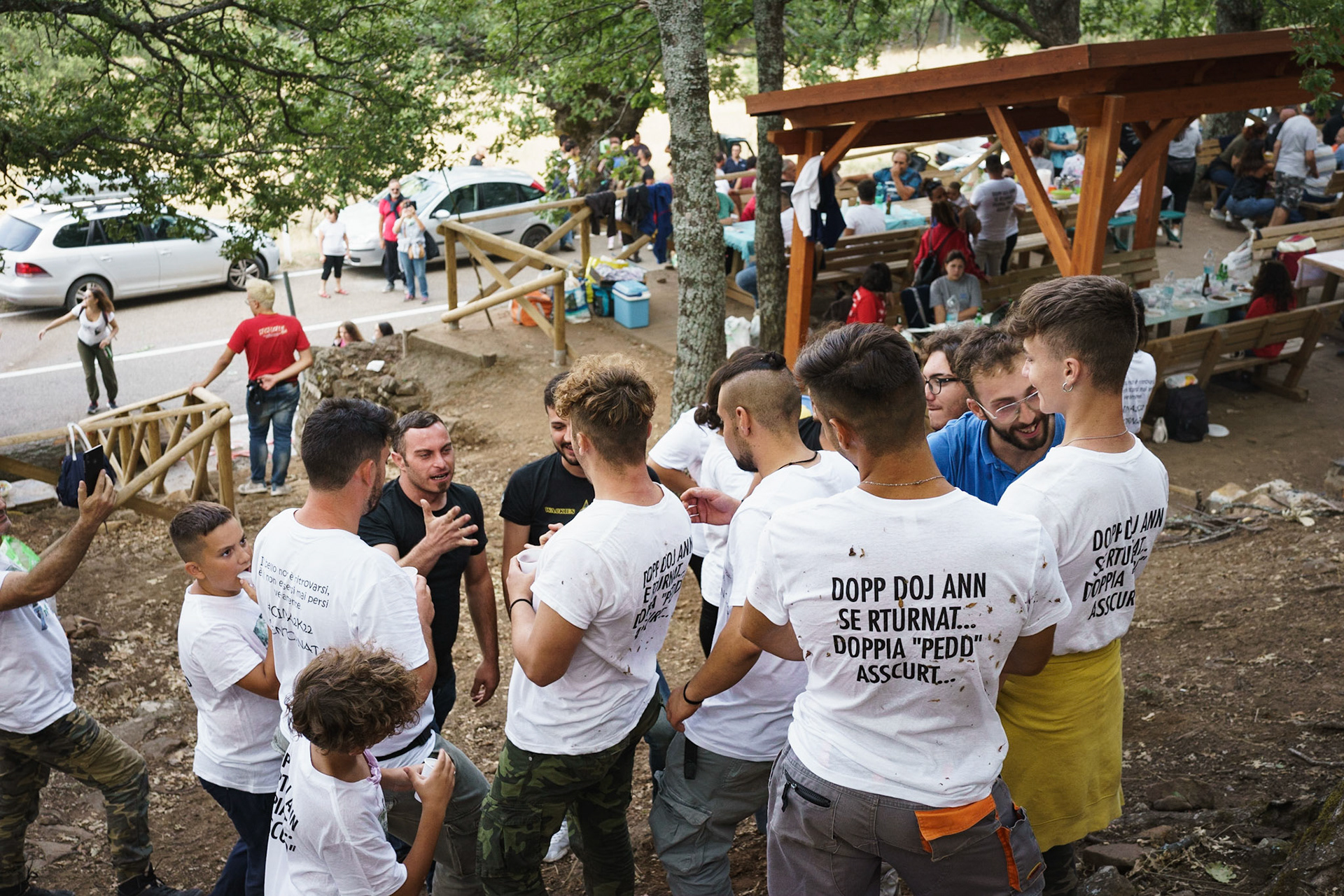
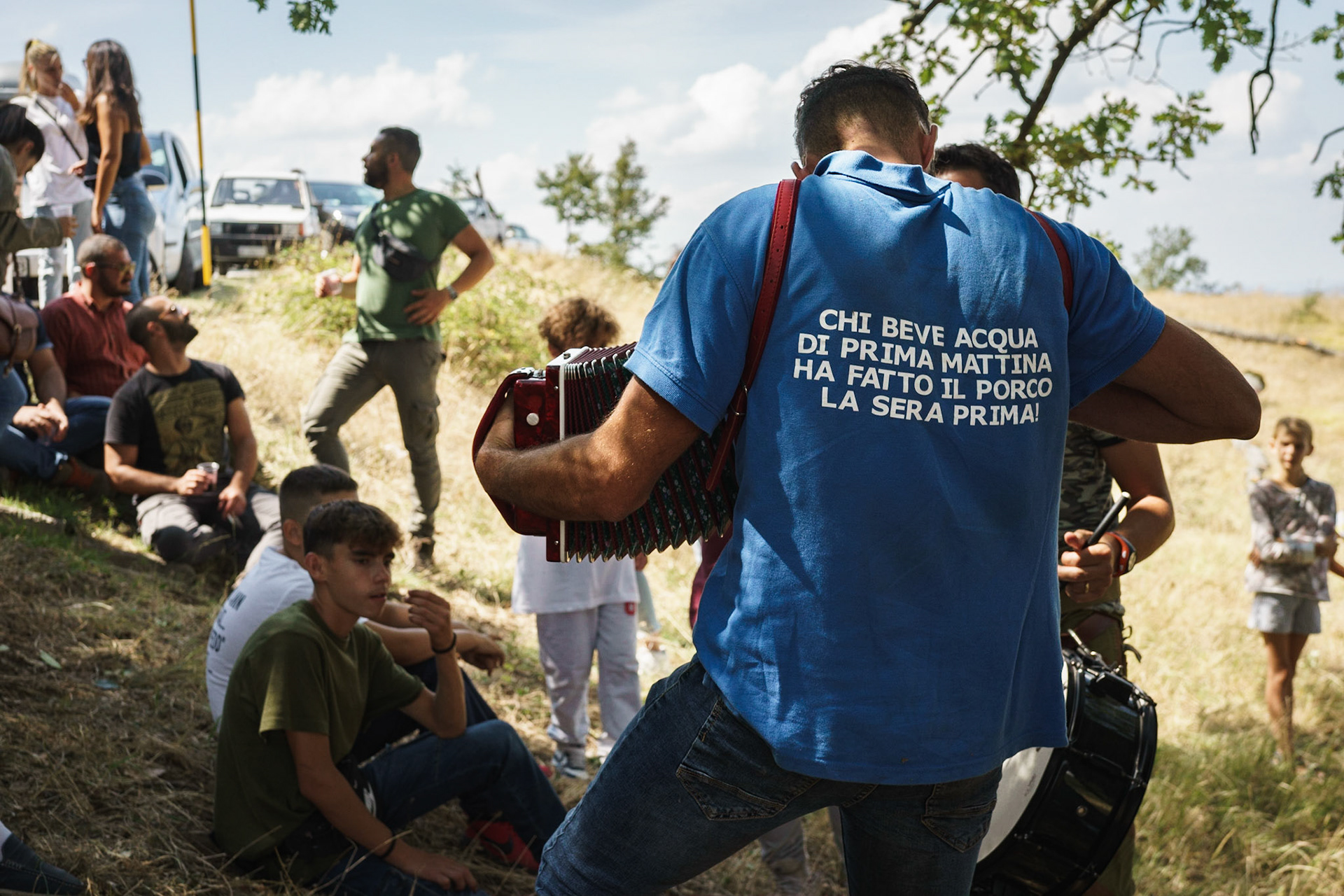
At noon, i cimaioli and the rest of their families meet up in a midway picnic area, where a long, upbeat collective lunch is held. This pause goes on among good food, offerings to friends and new acquaintances, wine, beer, folk songs and dances.
I cimaioli arrive with their tail of followers and relatives in town later in the day, upon sunset. After a final and very long pause (up to two hours) where they drink and dance with the rest of the town, and then drink some more, they pick up la Cima again for a last lap.
Everyone makes space in the central square, so they can carry her for a spectacular ride. Accompanied by the sound of the marching band they run back and forth, agitate la Cima, make her jump on their arms.
La Cima has officially arrived in town. I cimaioli will leave her for a couple of days standing in the main square, while the older men will take care of bringing il Maggio in town with their tractors and work on his appearance for the big day.
It's wedding day. While in the only church women and kids gather for the holy function, men of all ages reach the main square to take la Cima back on track and to bring her to unite with her groom. The marching band plays loud and proud. And when for some reason it doesn't, when the pause between a march and the other takes too much, i cimaioli shout to them to get back playing.
Meanwhile, the older half of the town's men is involved in smoothing out and carving il Maggio for his imminent union with the bride. They make him as smooth and shiny as possible, and start positioning the "fork" pulley mechanism that is needed to pull up both trees standing.
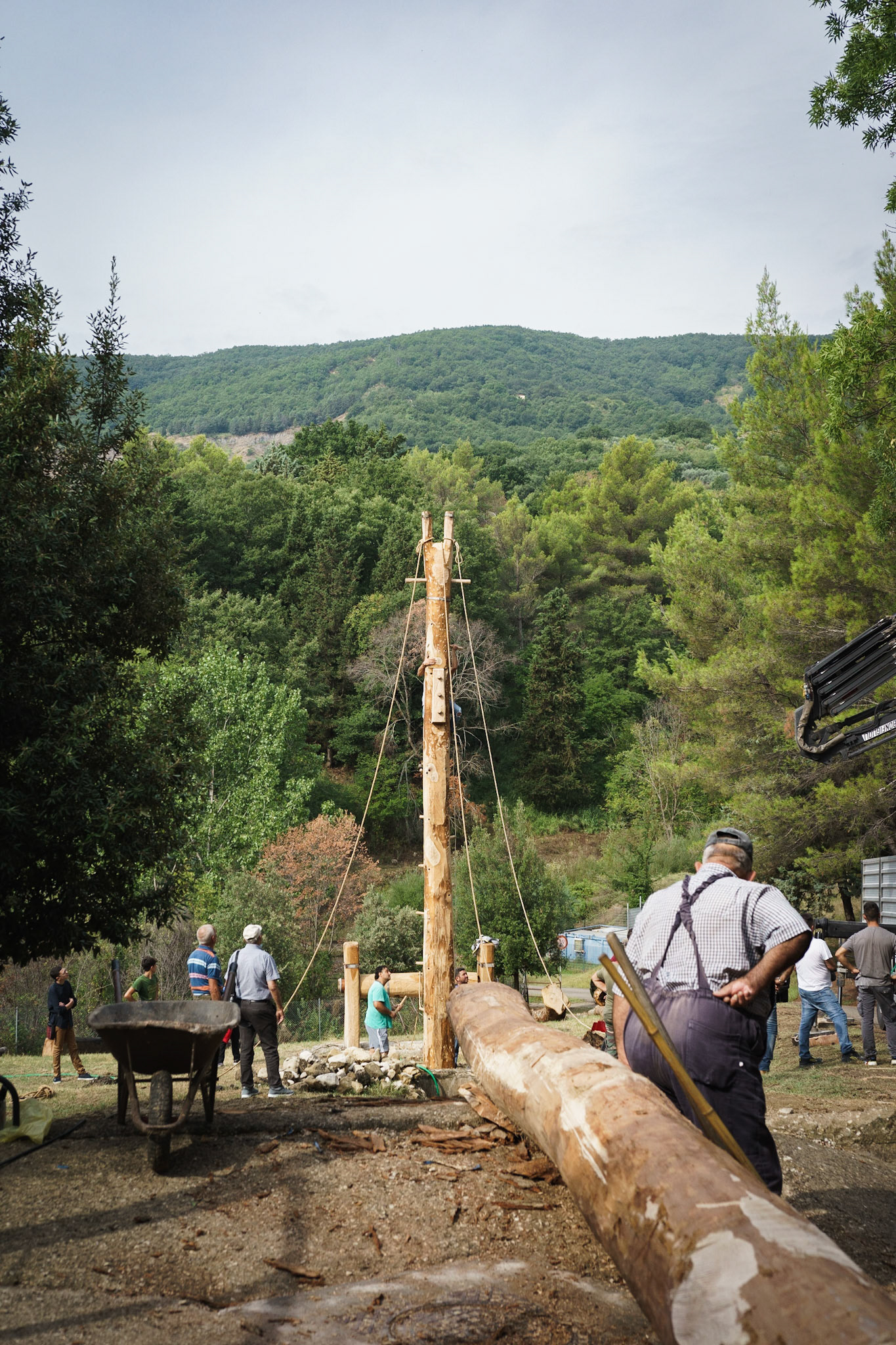
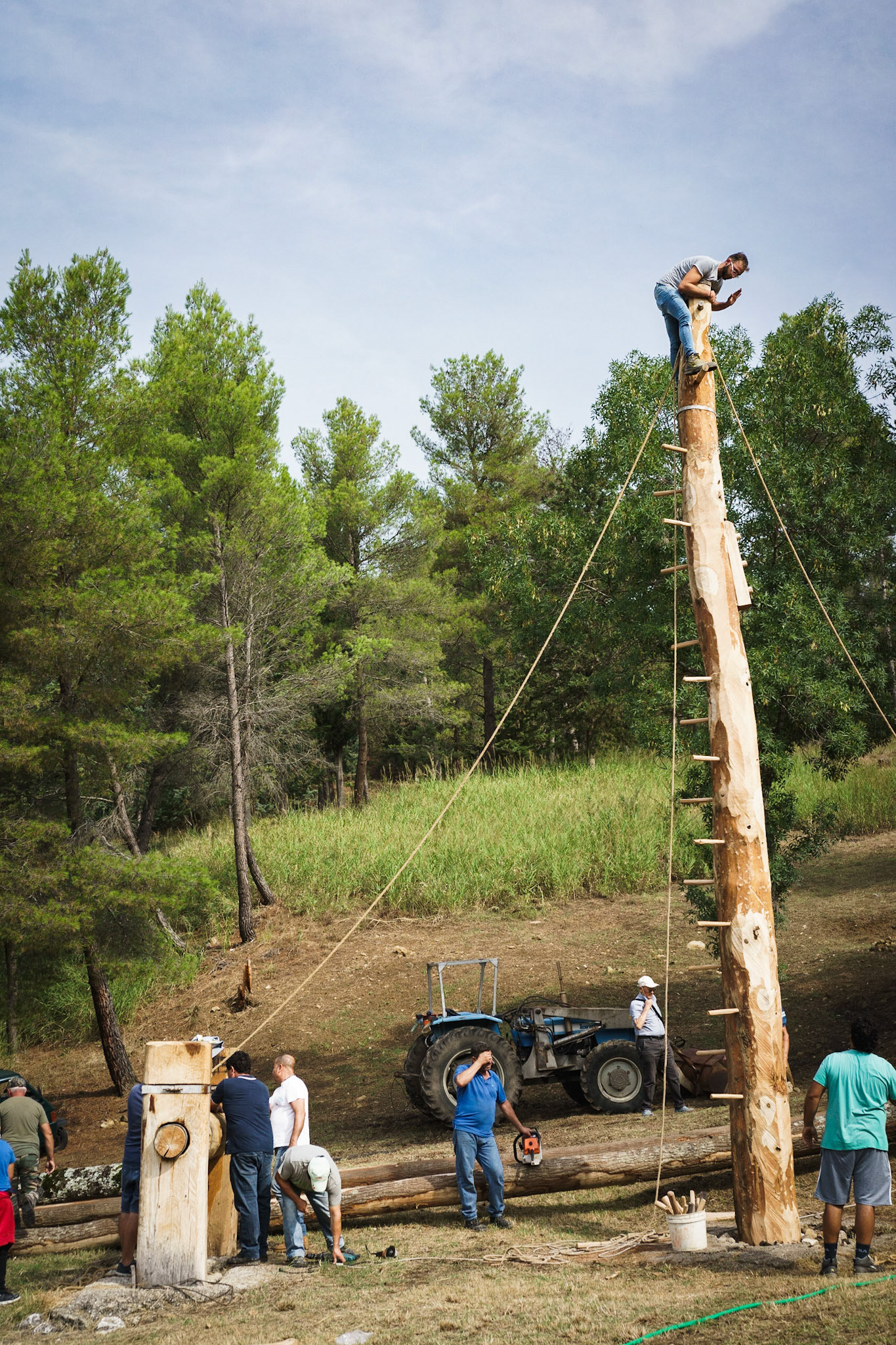
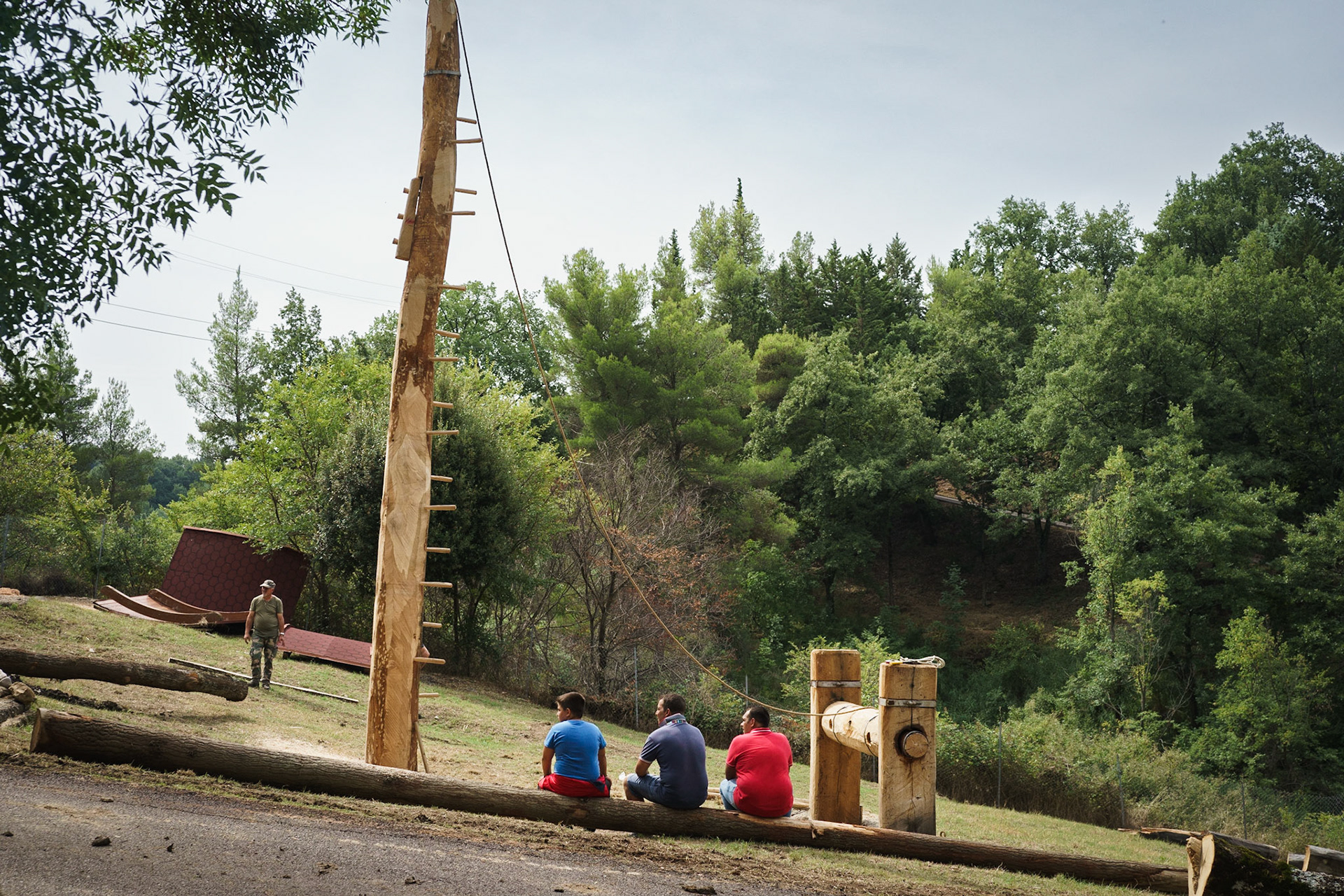
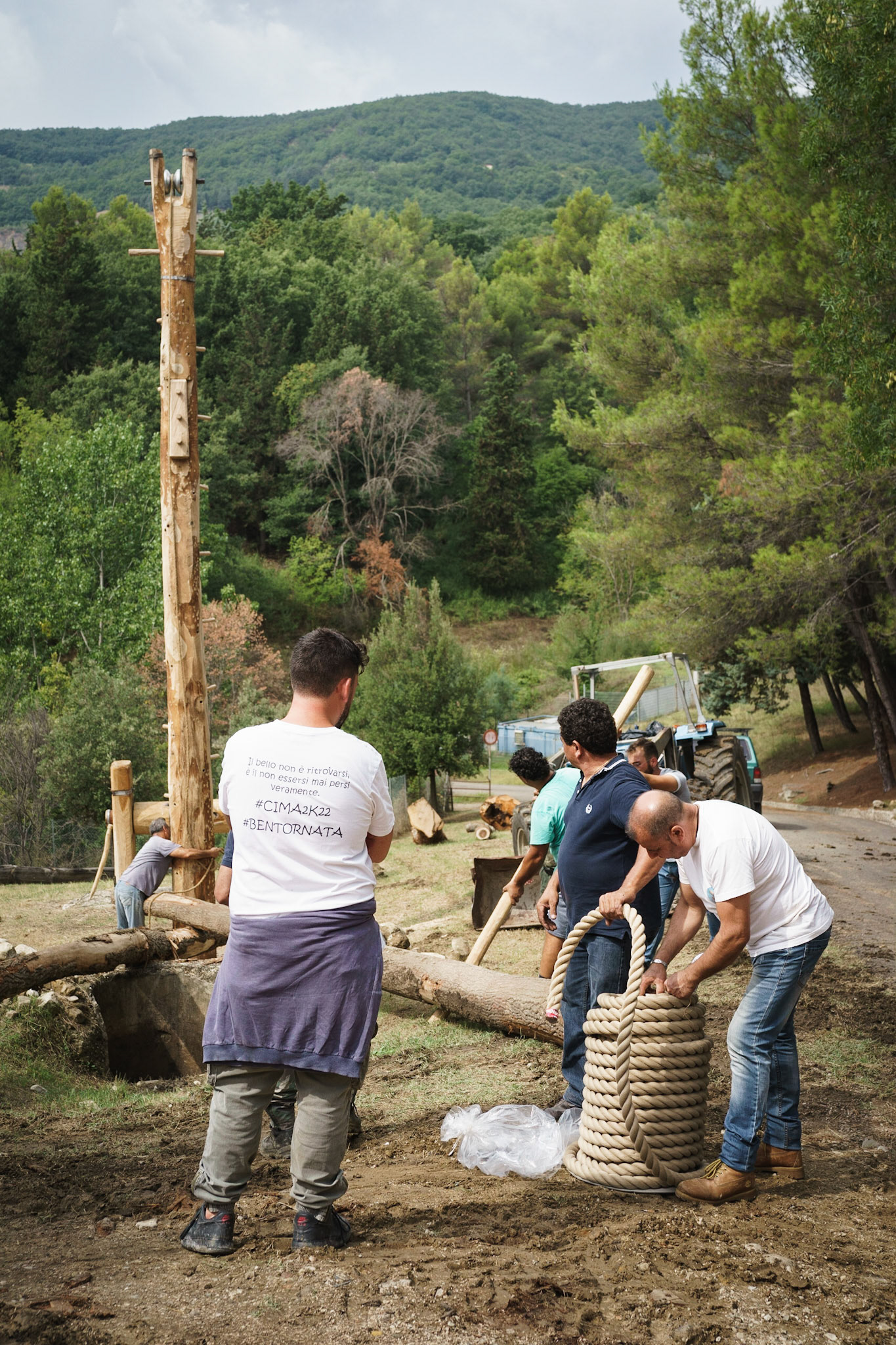
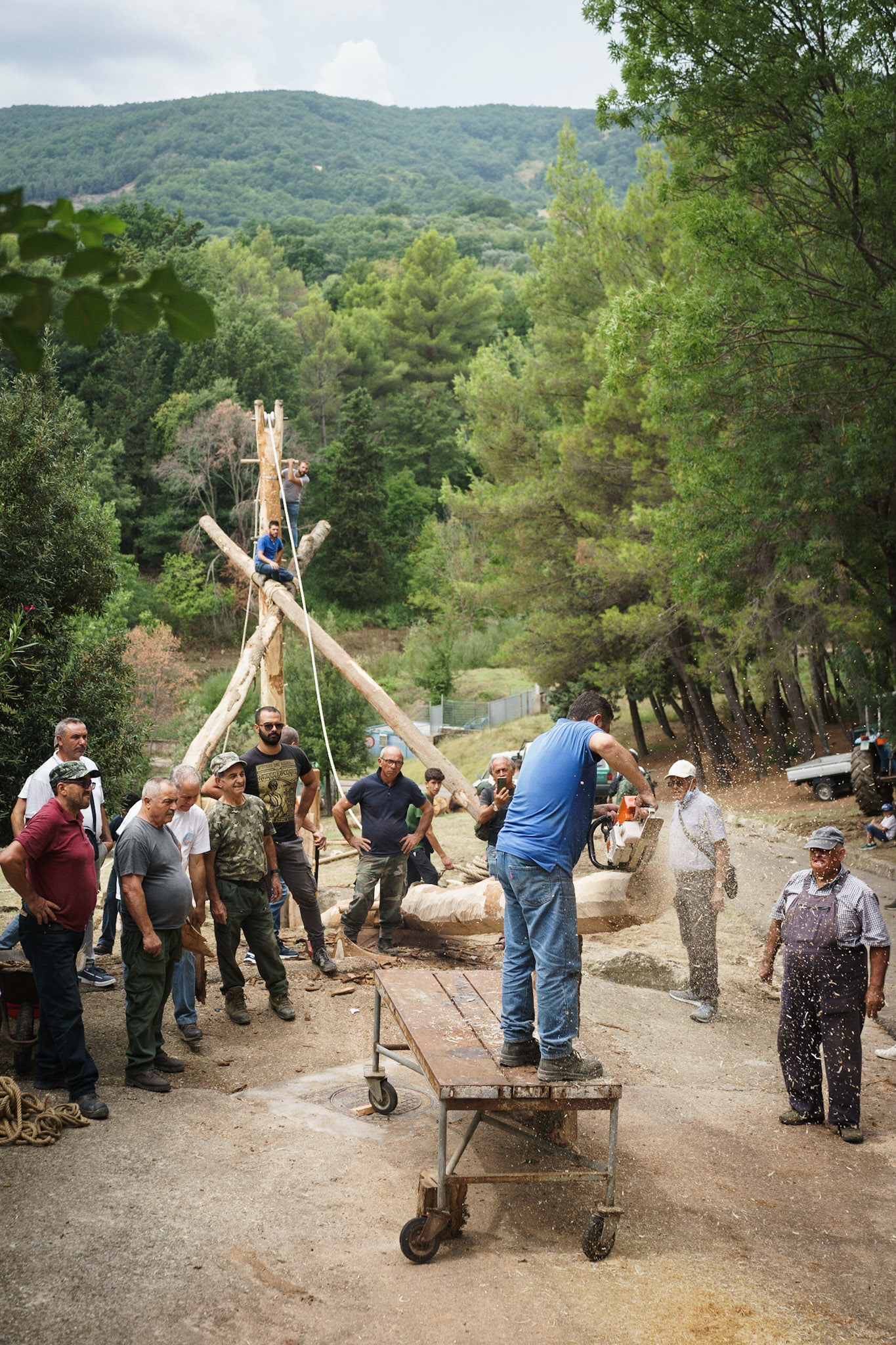
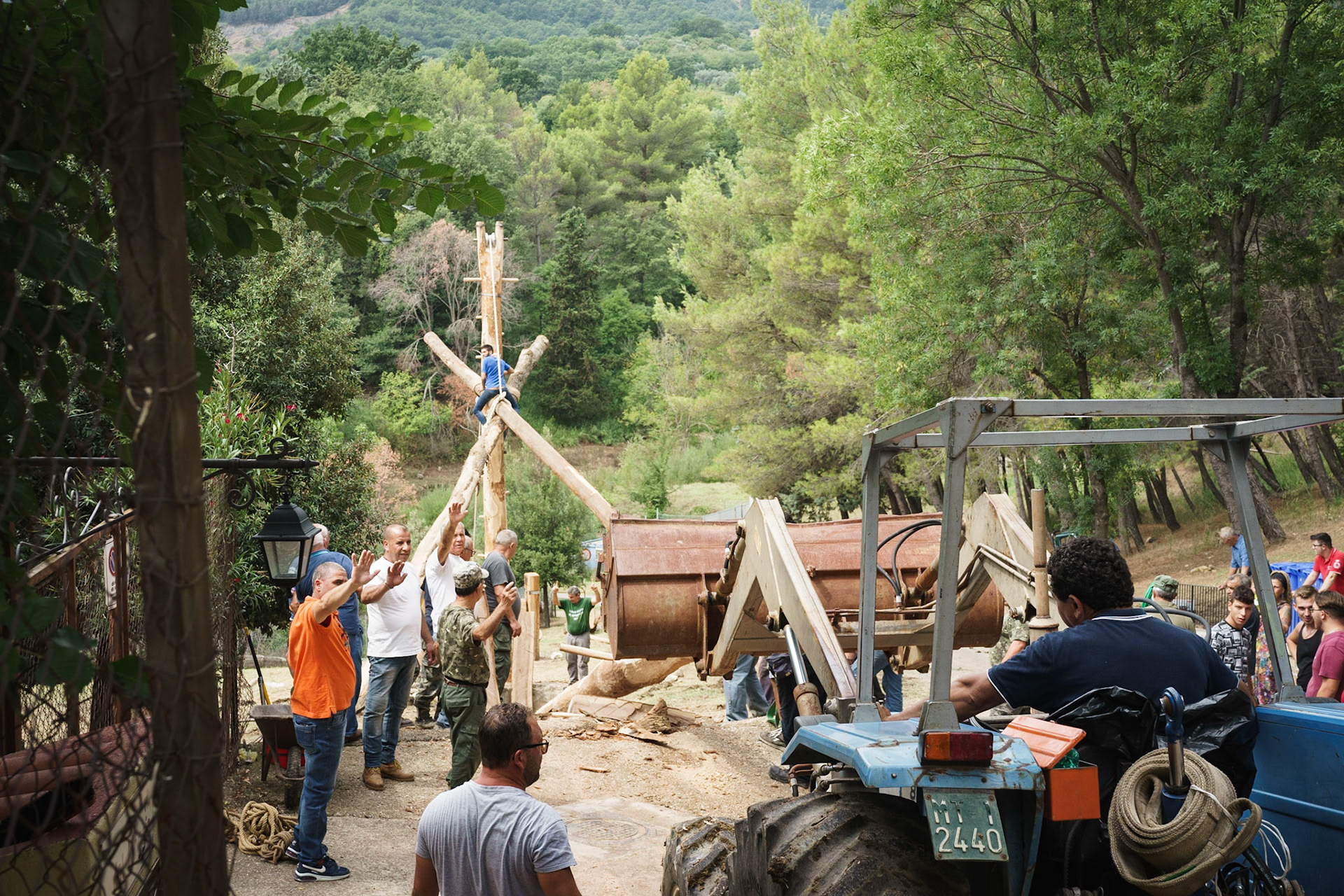
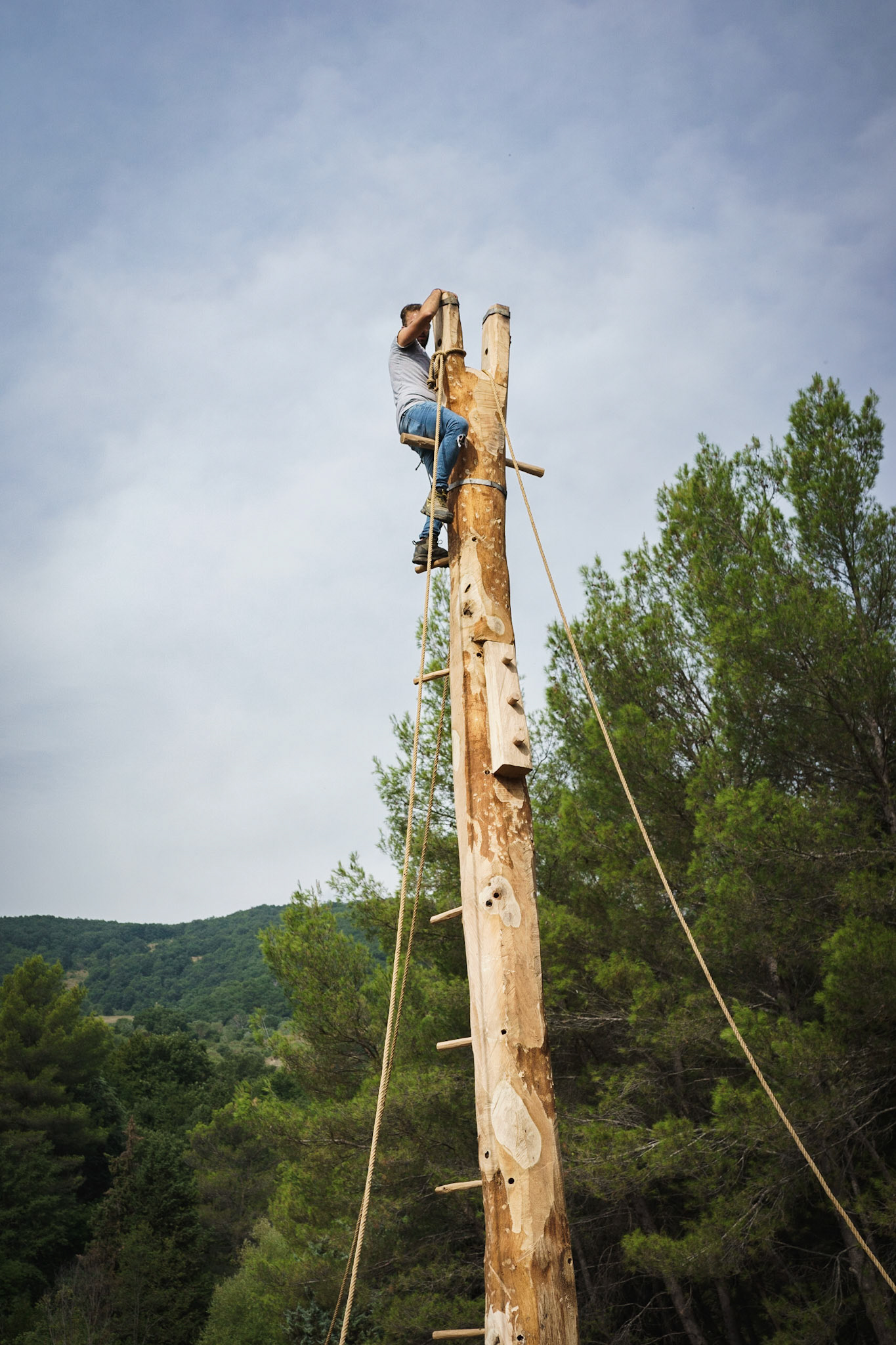
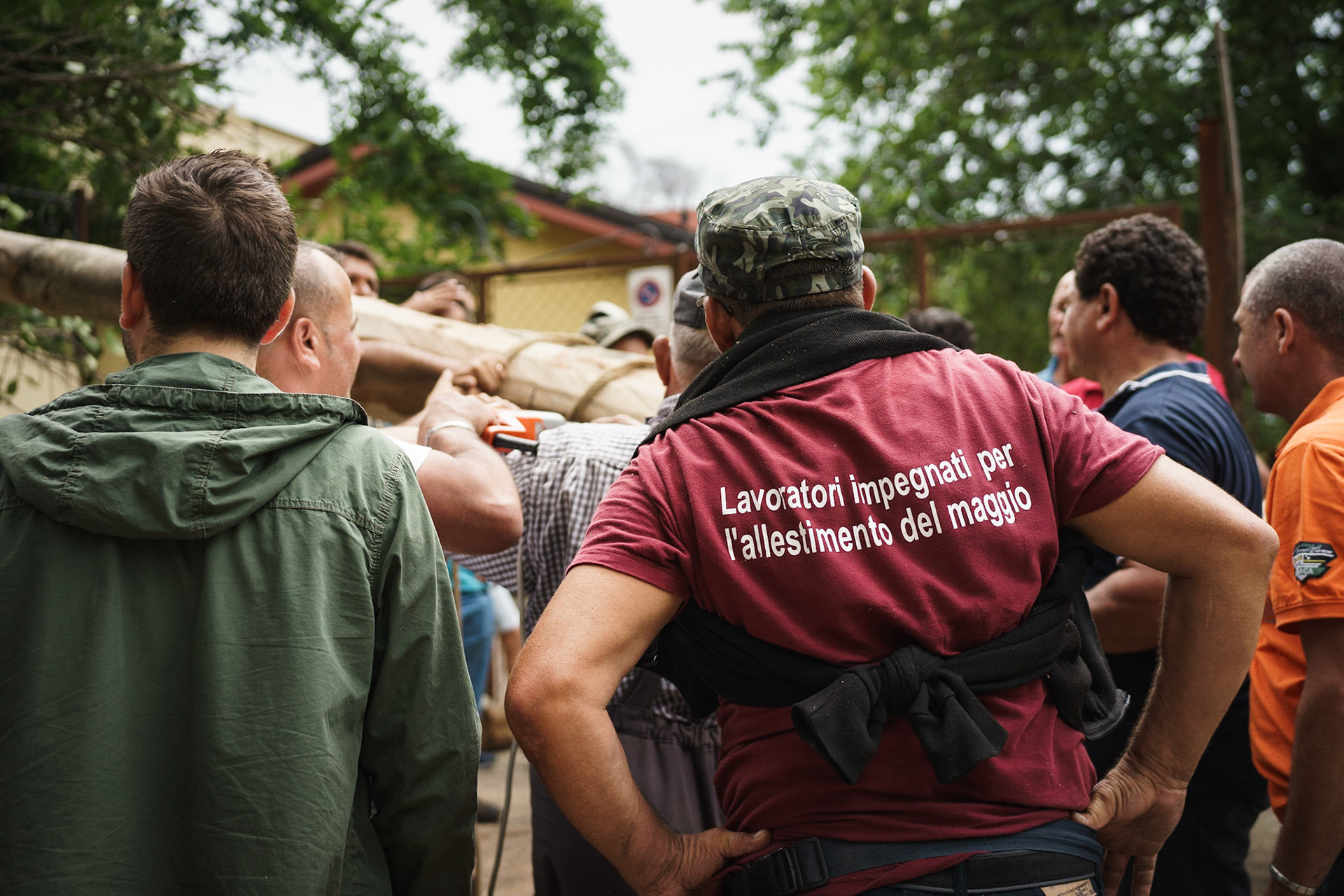
La Cima has finally arrived. Young and old men reunite while a master logger starts levigating the joint slots on both trees in order to unite them before the hoisting.
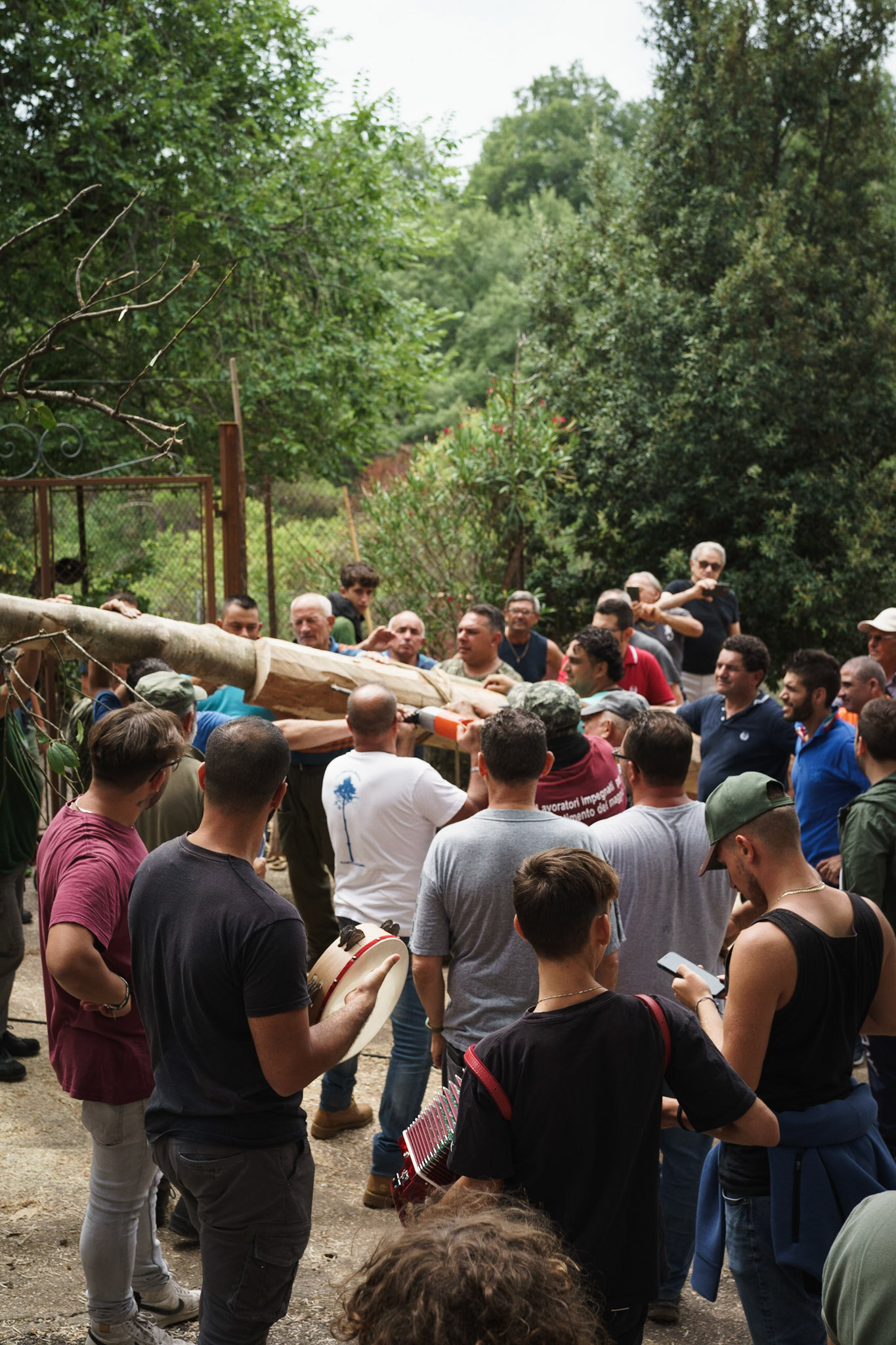
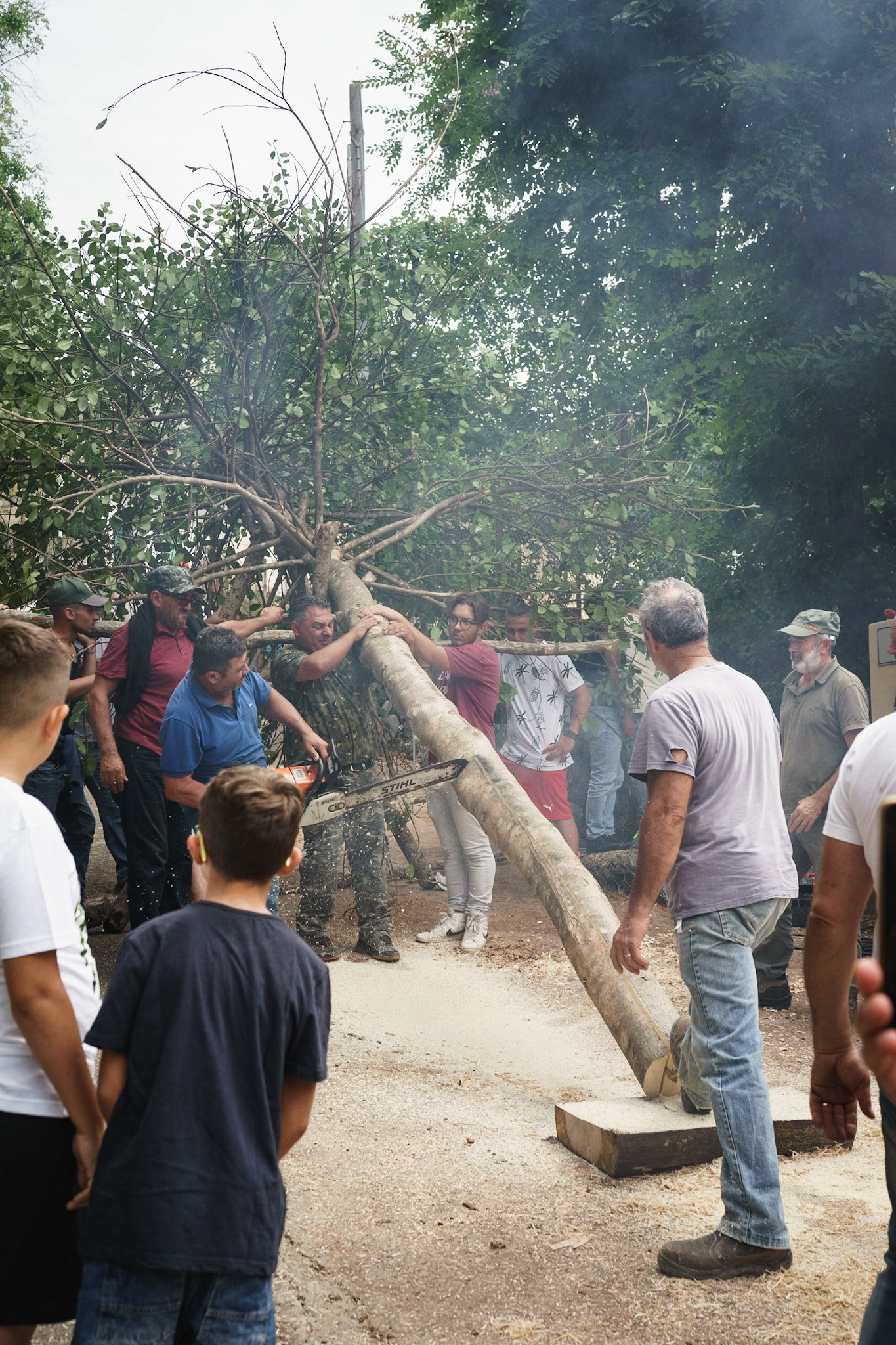
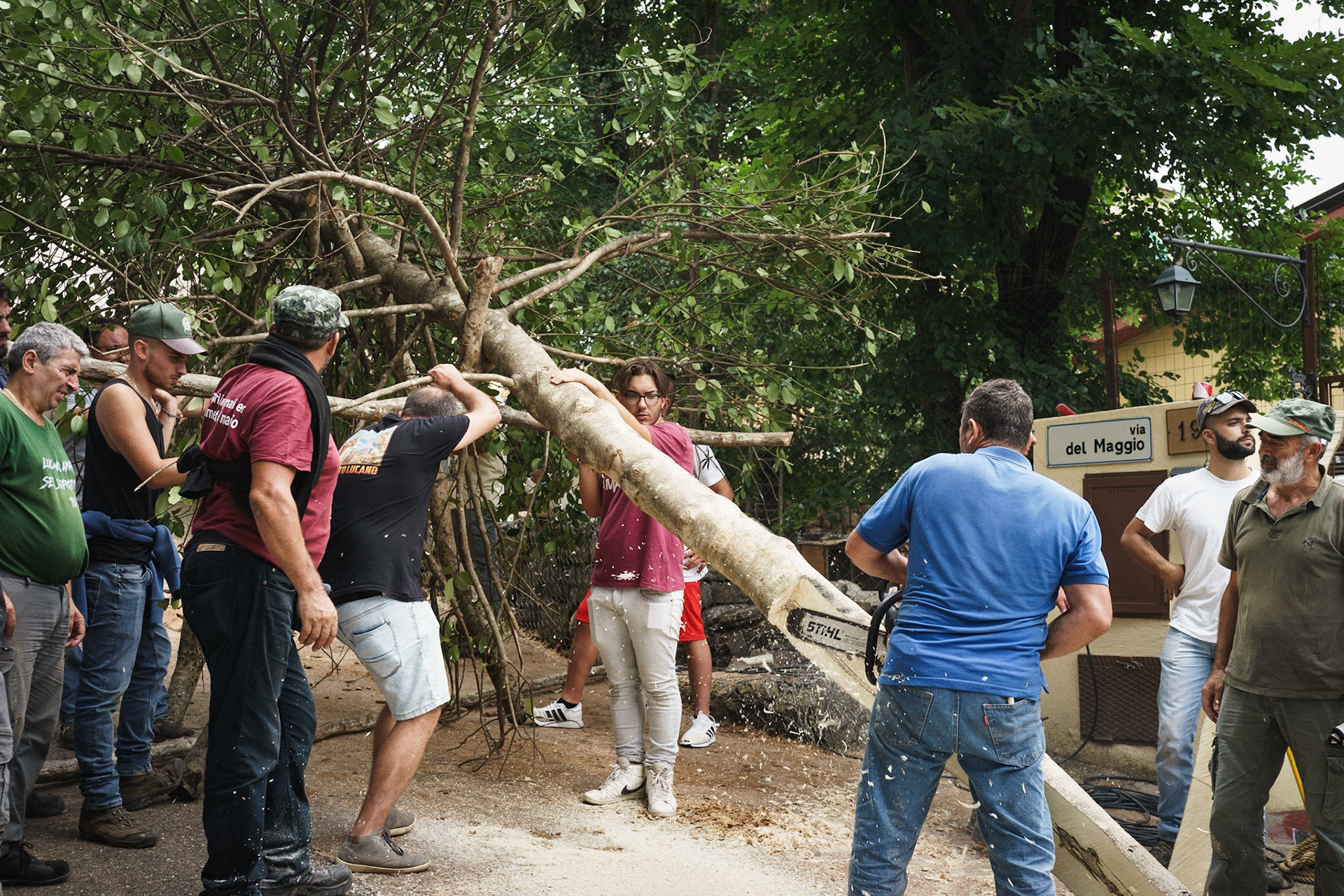

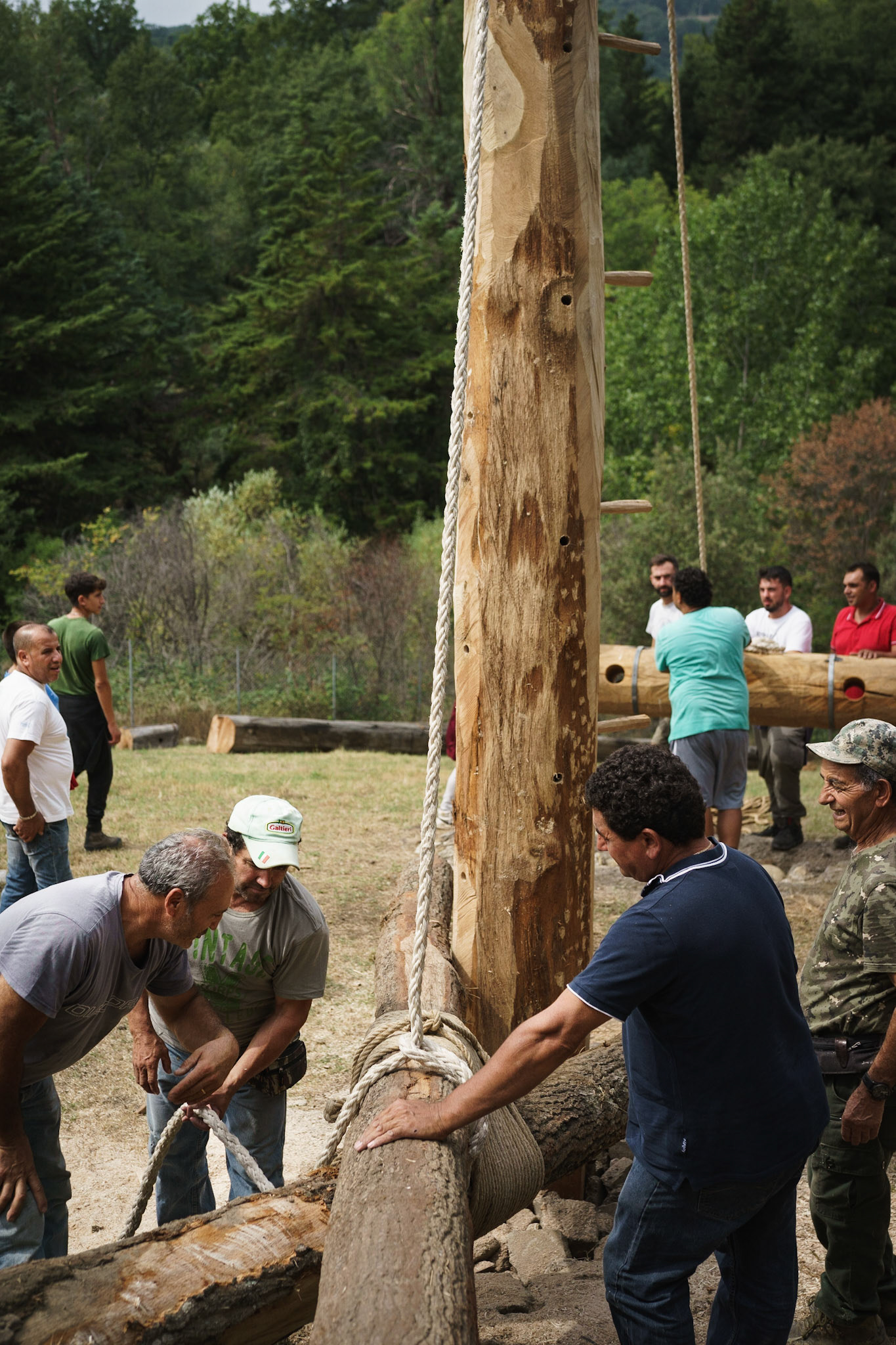
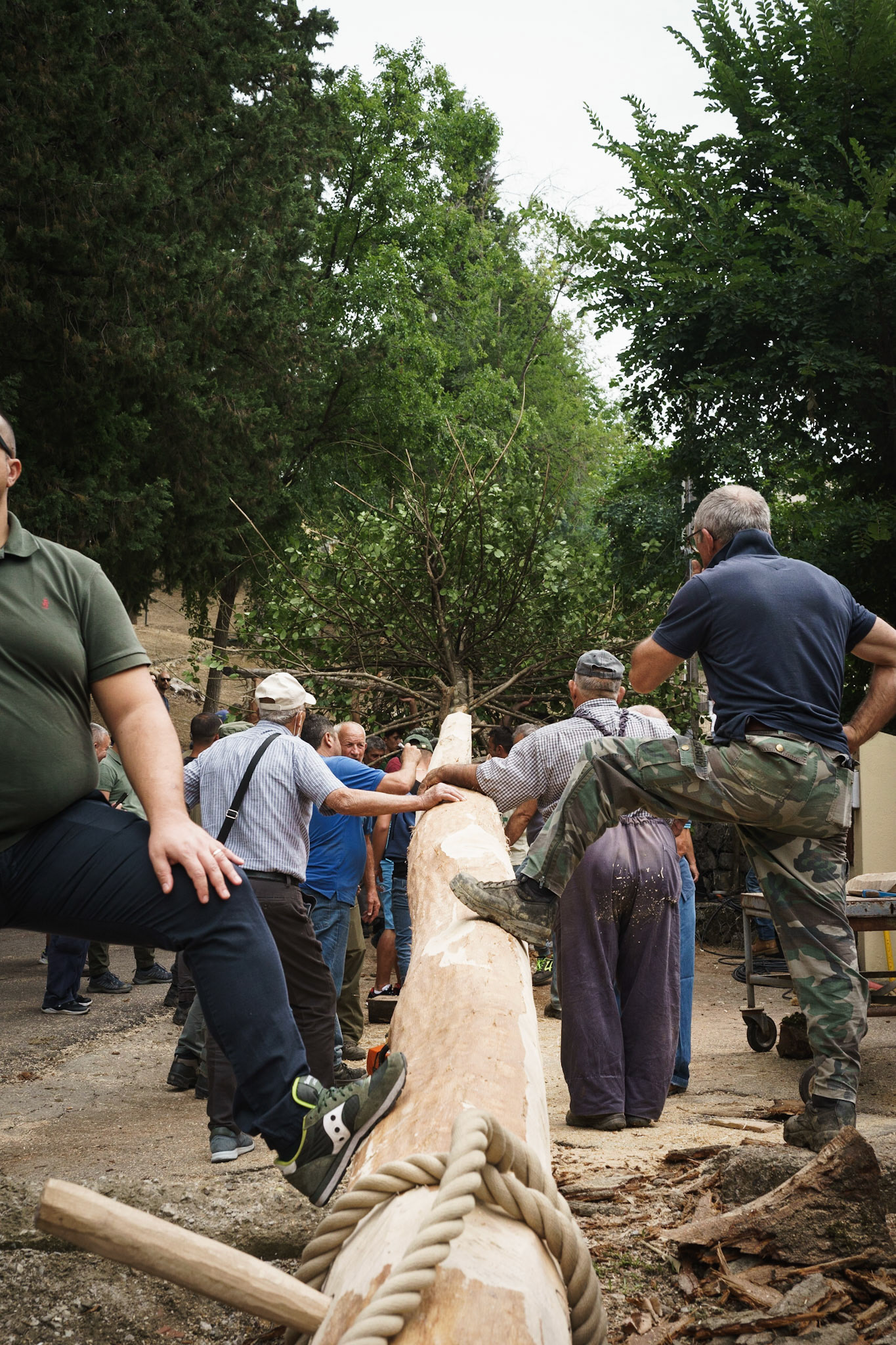
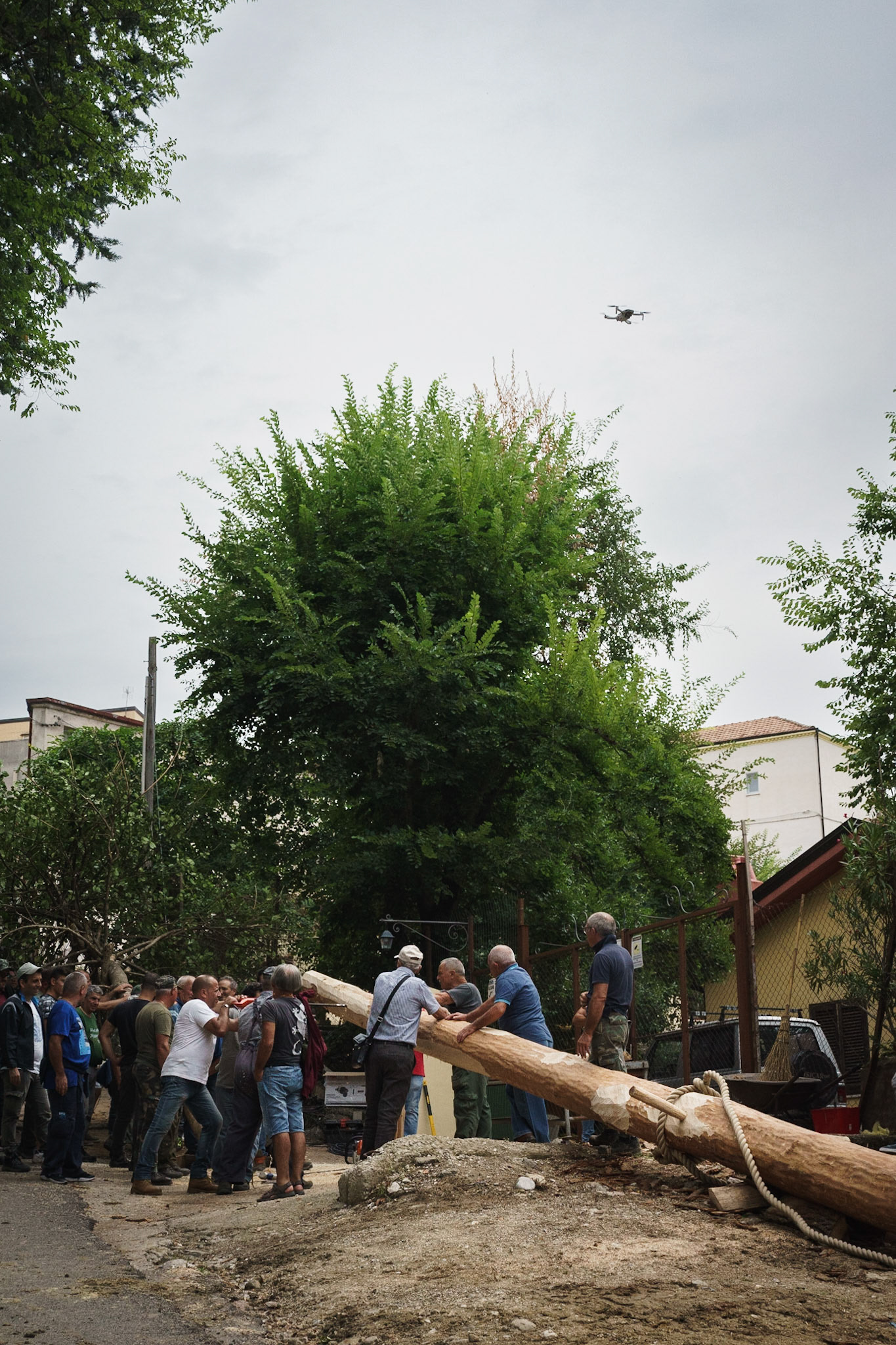
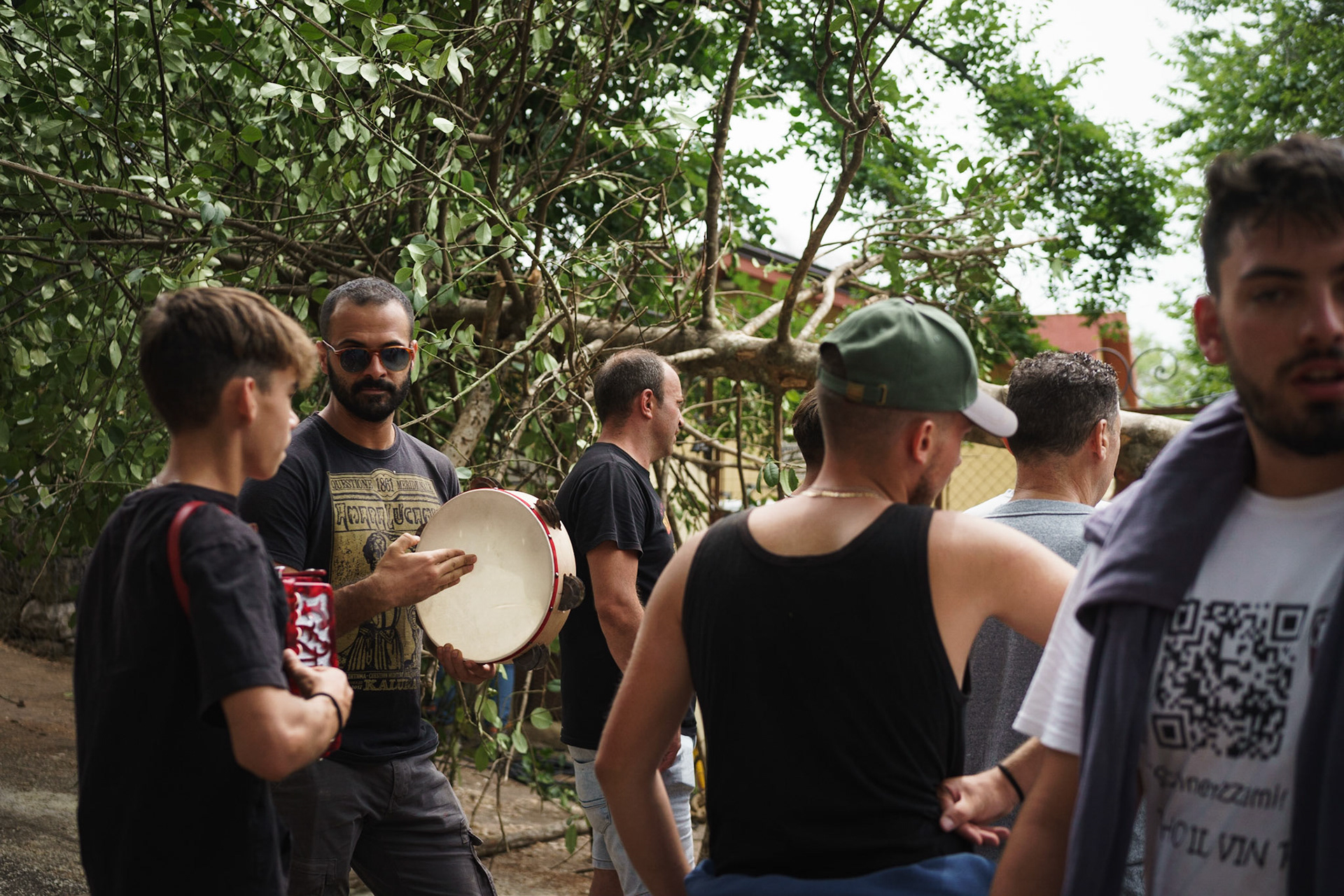
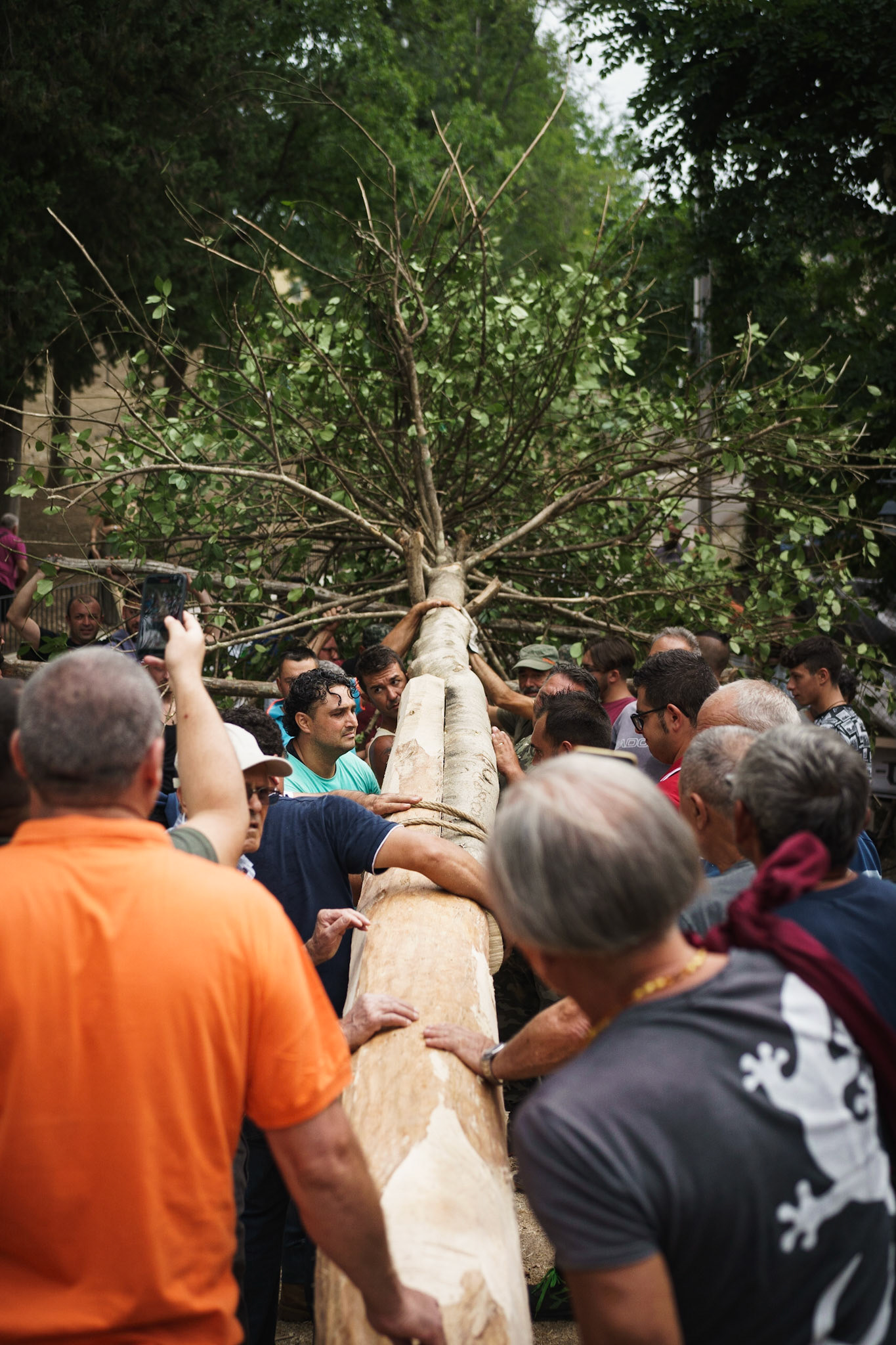
Bride and groom are now tightly wedged into one another. The hoisters prepare the human pulley. It is time.
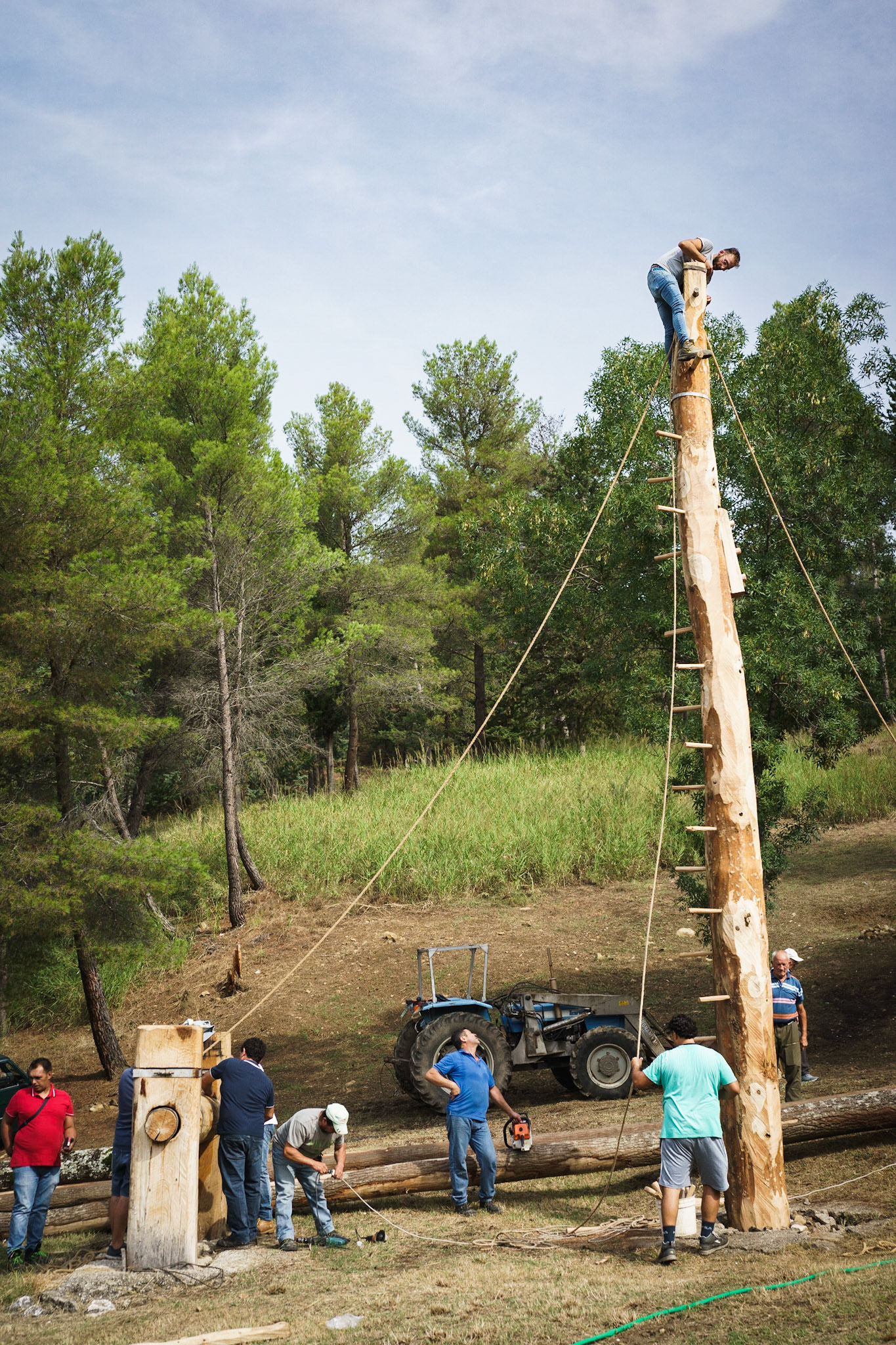
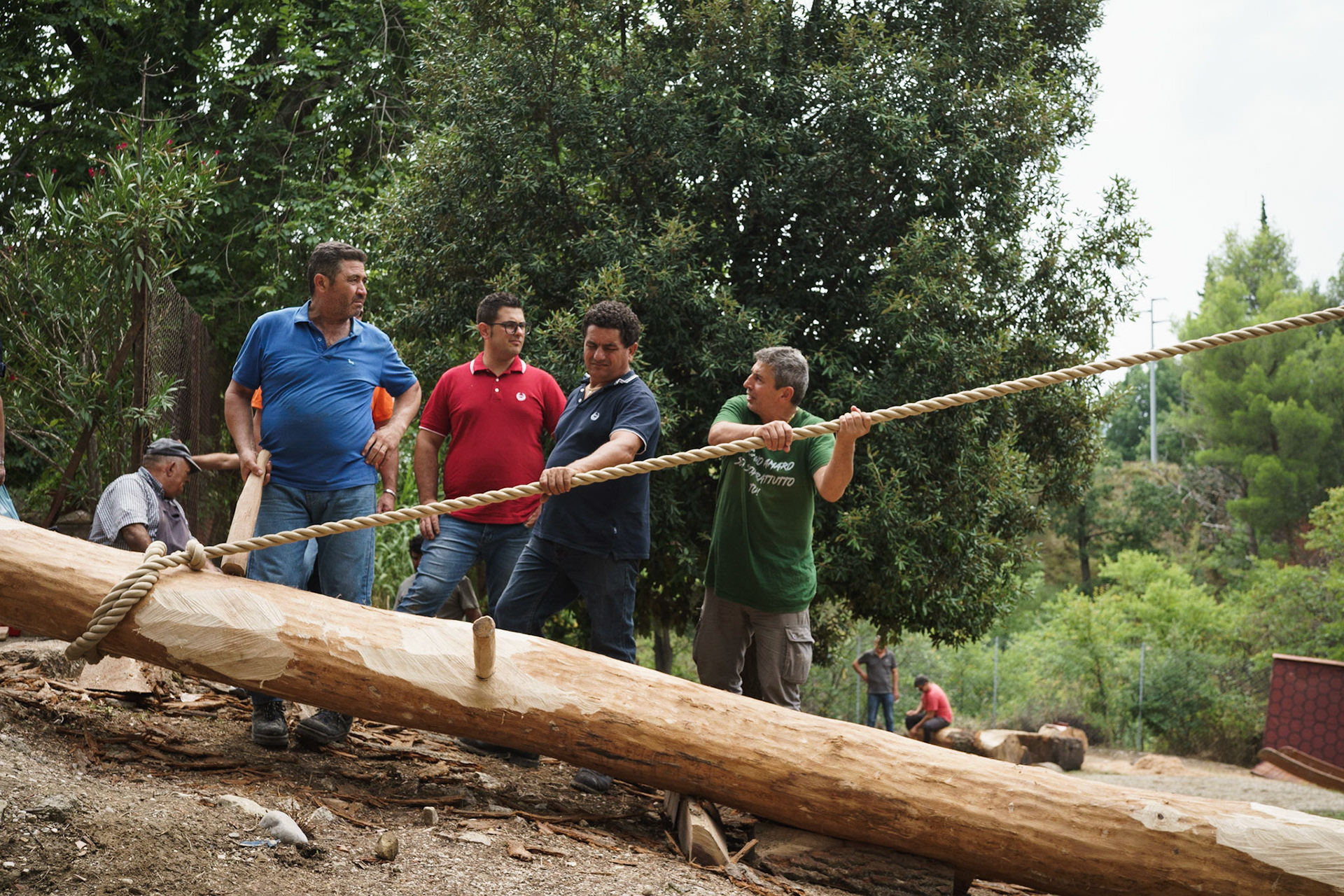
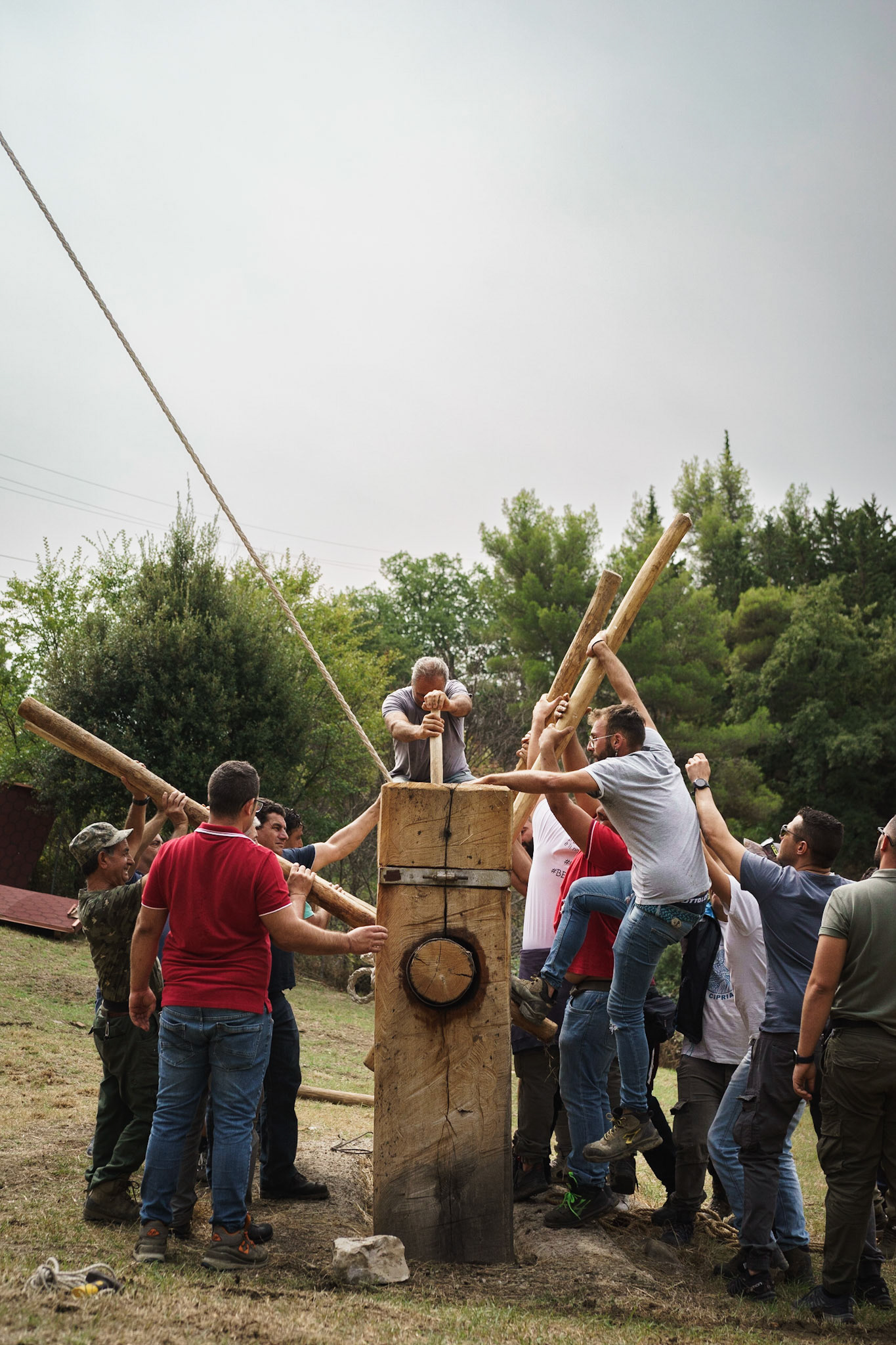
In the meantime, the holy mass had evolved into a procession of saints (St. Cipriano and St. Rocco) and all the women and children arrive just in time on the clearing where il Maggio and la Cima are about to stand. Hoisters begin their travail.
Everyone is with their nose pointed upwards.
